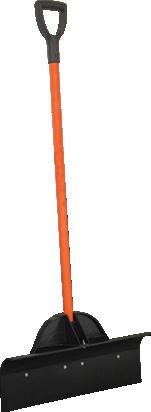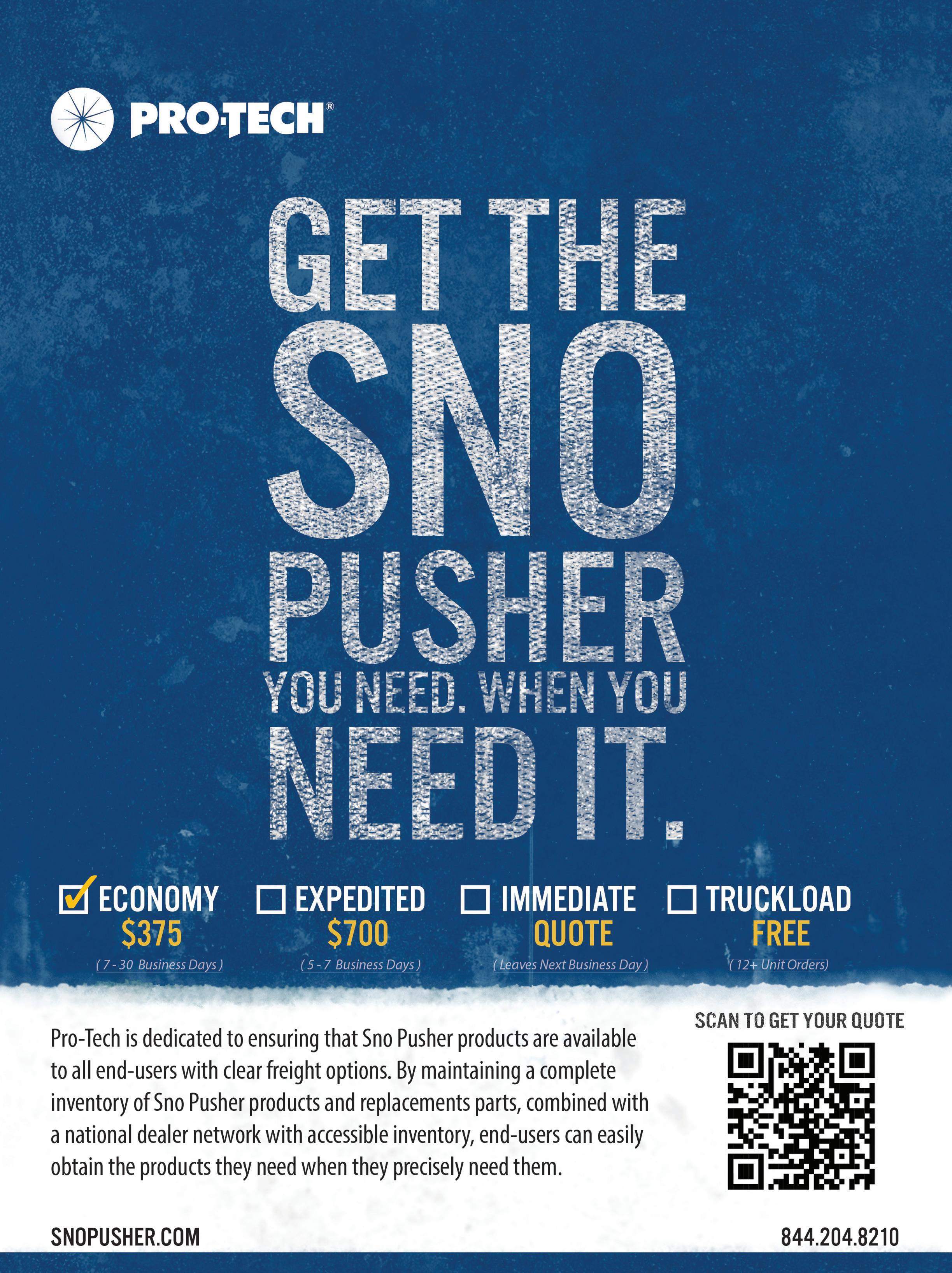












This winter season will present times of adversity. In what ways are we going to continue to persevere?
The fourth-annual SIMA Leadership Forum provided record attendance and worldly scenery in the mountains of Vail, CO. In addition to creating friendships and professional networks, what else was learned?
I was profoundly moved by the candid message given by Drew Petersen. Drew is an accomplished distance athlete and professional skier. He shared his lifelong struggle with depression and suicidal thoughts, which began when he was 9 years old. The audience viewed his recently released short film, “Feel it All,” and to say Drew opens his heart and mental health struggles in the movie would be an understatement. I spoke with Lisa Rose, CSP, after the presentation, and her comment was, “One more day, one person, or just one action can change your perspective of life into one worth living.”

Needless to say, Drew has persevered, and it’s now his personal mission to bring awareness of mental health to as many people as he’s able. Learn more about Drew’s journey at drew-petersen.com.
This winter season will present times of adversity, which may be volatile weather, business relationships, workers in the field, equipment, and working long

nights. In what ways are we going to continue to persevere through adversity? For readers, I highly recommend “The Obstacle is the Way” by Ryan Holiday. If you missed the SIMA update at the Symposium in June, look into how buffalo behave when they see storms coming. And plan to join us at next year’s Leadership Forum. Mark your calendars and bring your growth mindset, love of learning, and appreciation for live music and join us on August 24-26, 2025, in Nashville, TN!

Read





Publication | www.sima.org
EDITORIAL
Education & Content Director
Cheryl Higley // 262-236-9972 // cheryl@sima.org
Design & Production
Lisa Lehman // 216-798-1853 // lisa@sima.org
ADVERTISING SALES & MANAGEMENT
Engagement & Development Senior Manager
Kerri Joseph // 614-557-3948 // kerri@sima.org
Supplier Services Manager
Aimee Krzywicki // aimee@sima.org
DIGITAL MEDIA & MARKETING
Marketing Senior Manager
Stephanie Orvis // 262-236-9948 // steph@sima.org
SUBSCRIPTION
Subscription changes/updates: https://www.sima.org/subscribe
EDITORIAL ADVISORY COMMITTEE
Charmaine Allen Allen Builders & Landscape
Nichole Ashton, CSP North Country Snow and Ice Management
Jim Hornung Jr., CSP Elbers Landscape Service
Rick Kier, CSP Forge Ahead Consulting and Software LLC
Bob Marks, CSP, ASM emi landscape
William Moore, CSP, ASM Executive Property Maintenance
Dean Outhouse, CSP, ASM Piscataqua Landscaping
Jason Ostrander, CSP East End Group
10140 N. Port Washington Road, Mequon, WI 53092 414-375-1940 // info@sima.org // www.sima.org
Chief Executive Officer Martin Tirado, CAE // martin@sima.org
Finance & HR Director KC Hallgren // kc@sima.org

heather@sima.org
Membership Services Senior Manager evan@sima.org
Membership Services Manager amanda@sima.org
Thomas Skuta, CSP USM
Robert Young K.E.Y. Property Services
Michael Wagner, CSP, ASM Colorado DesignScapes Co.
Education Senior Manager Ellen Lobello // ellen@sima.org
Brand & Design Manager
Gwen GaBree // gwen@sima.org
Office Manager / Executive Assistant Nikki Luedtke // nikki@sima.org
Business Process Manager
Nakishia Lee // nakishia@sima.org
Accounts Receivable Specialist Amanda Peacock // apeacock@sima.org
SIMA OFFICERS & DIRECTORS
Board Chair: David Wescott, CSP, Transblue
Immediate Past Chair: Mark Arthofer, CSP, Skyline Construction
Vice Chair: Chris Hinton, CSP, GRM Inc.
Jeff Heller, CSP, Innovative Maintenance Solutions
Ruben Diaz, ASM, Diaz Group LLC
Tom Fitzgerald, CSP, Outworx Group / Tovar Snow Professionals
Connie Gaul, ASM, Brightview Enterprise Solutions
Patrick Kane, CSP, Evercor Facility Management
William Moore, CSP, ASM, Executive Property Maintenance
Robert Miller Jr., CSP, ASM, RPM Landscape
Chris Thacker, CSP, Mr. Mow it All Corp.
John Janes, CSP, ASM, Caterpillar
Debora Babin Katz, TrucBrush Corporation
2155-2576) Copyright © 2024 by the Snow & Ice Management
N. Port Washington Rd., Mequon, WI 53092 is produced and published February, April, June, August, September, October, December by the Snow & Ice Management Association. All Rights Reserved. No part of this publication may be reproduced or transmitted by any means without permission of the Publisher, SIMA – Snow & Ice Management Association. Subscribe at SIMA.org/subscribe. Periodicals postage prices is paid at Mequon, WI, and additional entry offices S. Preston Hwy, Lebanon Junction, KY 40150-9998. POSTMASTER: Send address changes to , Lowell, MA 01853

Snowrator® and SR MAG are the right-size solutions for all your snow and ice business needs. Designed to pair versatility with force, these solutions are equipped with the tools you need and the accessories you want to clear the sidewalks you service.
Accessories sold separately.

By DAVID GALLAGHER
Irecently attended the SIMA Leadership Forum in Vail, CO. Aside from the beautiful scenery and amazing accommodations, great people delivered amazing messages. Each in their own way outlined how a leader must create an environment and direction for others to follow. A leader isn’t created with a title, experience or tenure. A leader outlines the reasons for the next step and the achievements that are at the end of the trail, while allowing the followers to navigate and blaze new trails toward them.
Casey Brown outlined thoughtprovoking evidence to support the necessity and success of increasing prices. She helped us understand the impact that seemingly small, inconsequential price increases or discounts and price concessions can have on the bottom line.
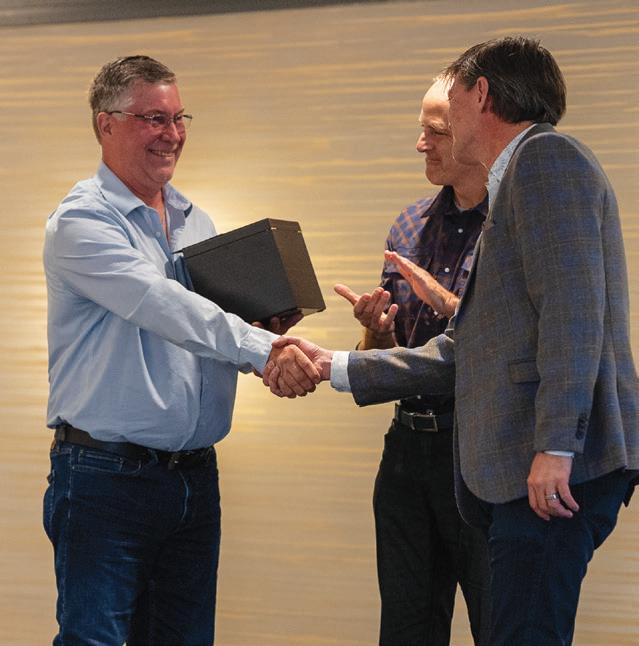


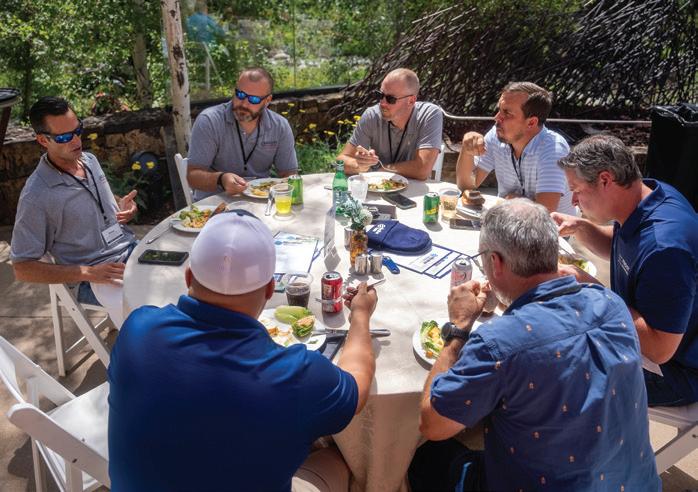
Steve Wheatcroft, a serial entrepreneur in the snow and green

We’re leaving the Rocky Mountains for the bright lights and honky tonks of Nashville, TN for the 2025 Leadership Forum. Make plans to join us in Music City USA on August 24-26!
industries from Calgary, Alberta, shared his six stages of leadership growth, and the lessons learned along his journey to building the largest snow and landscape company in Canada. His candid and entertaining style delivered a real, raw and true look at what every leader goes through when building a scalable, sustainable business.
Joey Coleman stepped in for his friend John Ruhlin of Giftology, who unexpectedly passed away a week before the event. In a testament to John’s life and accomplishments, a group of his closest professional speaker friends picked up his speaking calendar and delivered on his behalf— talk about leadership!
Joey reviewed the first 100 days of the customer journey and highlighted the importance of understanding the eight phases of the customer lifecycle. At the conclusion, he paid tribute to John and to SIMA’s Immediate Past Board Chair Mark Arthofer, CSP. Mark received a mug specially crafted by Giftology with guidance from
Mark’s wife. It was an amazing and emotional moment, which highlighted the empathy and emotional intelligence of the audience.
Networking in a small setting like the Leadership Forum is second to none. Attending is a no brainer for me—the opportunities to grow my leadership and meet other accomplished leaders far outweigh the price of admission.
Supporting the Leadership Forum has become one of the cornerstone activities for the SIMA Foundation as it endeavors to create Opportunity, Research and Awareness for the professional snow and ice industry.
Thank you to SIMA, the Foundation, and the attendees for a memorable event.
David Gallagher is principal for Spiritus Business Advisors. He has over 25 years of experience as a senior service-oriented leader on all aspects of property service. Contact him at david@spiritusba.com.

IBy EVAN NEWMAN
n the ever-evolving world of snow and ice management, staying ahead of the curve is crucial. The Advanced Snow Management (ASM) designation and Certified Snow Professional (CSP) certification have long been recognized as hallmarks of expertise and professionalism in our industry. Now, with the recent expansion of the ASM program to include Spanish-language options and new Snow Management and Operations Management modules, snow professionals have more opportunities than ever to elevate their careers and business’ operations.
As a snow professional, we
recognize how hard you work. It’s essential to maximize the resources available to you. If you’re an active SIMA member and have yet to use it in 2024, you may be eligible for a $200 training commitment credit. This credit can significantly reduce the cost of obtaining your ASM, CSP, or equipping your whole team with confidence by setting up the All-Access Pass Video Series.
Sometimes memberships lapse and many don’t even realize they have lost benefits, because they still receive Snow Business or some of our email content. Please consider verifying your membership information by scanning the QR code and we will give you an additional $100 credit toward the CSP, ASM or All-Access Pass Video Series.
If your membership has lapsed, we are going to give you $50 off your first

year back with SIMA. Combine that with the $300 in training commitment credit for $350 in total savings. Scan the QR code and verify or reactivate your membership today. Thanks for your continued investment in SIMA!
Evan Newman is Senior Manager of Member Services for SIMA. Contact him at evan@sima.org.





























In winter management services, safety is of utmost importance. If you're a small organization or looking to grow, creating a structured safety program may not be top of mind; which is why SIMA developed The Standard Practice for Implementing a Safety Program for Snow and Ice Management Companies. This issue of Start Up highlights some of the key components to help you build and benchmark a safety program. Access the entire standard at sima.org/safety.
The standard identifies three key components in the creation of a program:
Develop and prepare governing documents of safety rules and procedures that adhere to the standard and to local, state, and federal agencies’ regulations. These procedures will serve as the guidepost for your team.
Establish and support a company safety liaison or committee that includes multidisciplinary stakeholders to develop, support and monitor the company’s safety program and assist in training development and implementation.
Provide financial support and resources for training and education. Safety starts at the top. If owners and managers show they are committed to safety, the team is more likely to buy-in to what will be expected of them.
The standard identifies five key pillars that should be established as general practices in your safety program:

1
Make sure your team is prepared with warm clothes, high-vis outerwear, and ear/eye/face protection. Educate them on the best foods and drinks to consume and the importance of sleep prior to a storm. For extended events, have plans for teams to warm up and get rest.
SIMA has bundled several safety resources, including checklists and tailgate talks for PPE/Safety, Site Safety, Shoveling/Snow blowing and more. Find these resources and the safety standard at sima.org/safety.

3
Teams should be trained on how to safely operate the equipment they're using based on the original manufacturer's printed recommendations.

Identify common safety hazards and set processes and training to prevent accidents. This could include loading and unloading equipment or materials, watching for moving vehicles/equipment and line-of-site concerns.



To adhere to the standard, five key guidelines must be followed:
A site looks different at 2 am when the snow is flying than when you conducted a preseason risk assessment. Teams should know how to assess sites; identify risks; photograph, video and document issues in writing; and communicate them to the client for remediation.
4 5
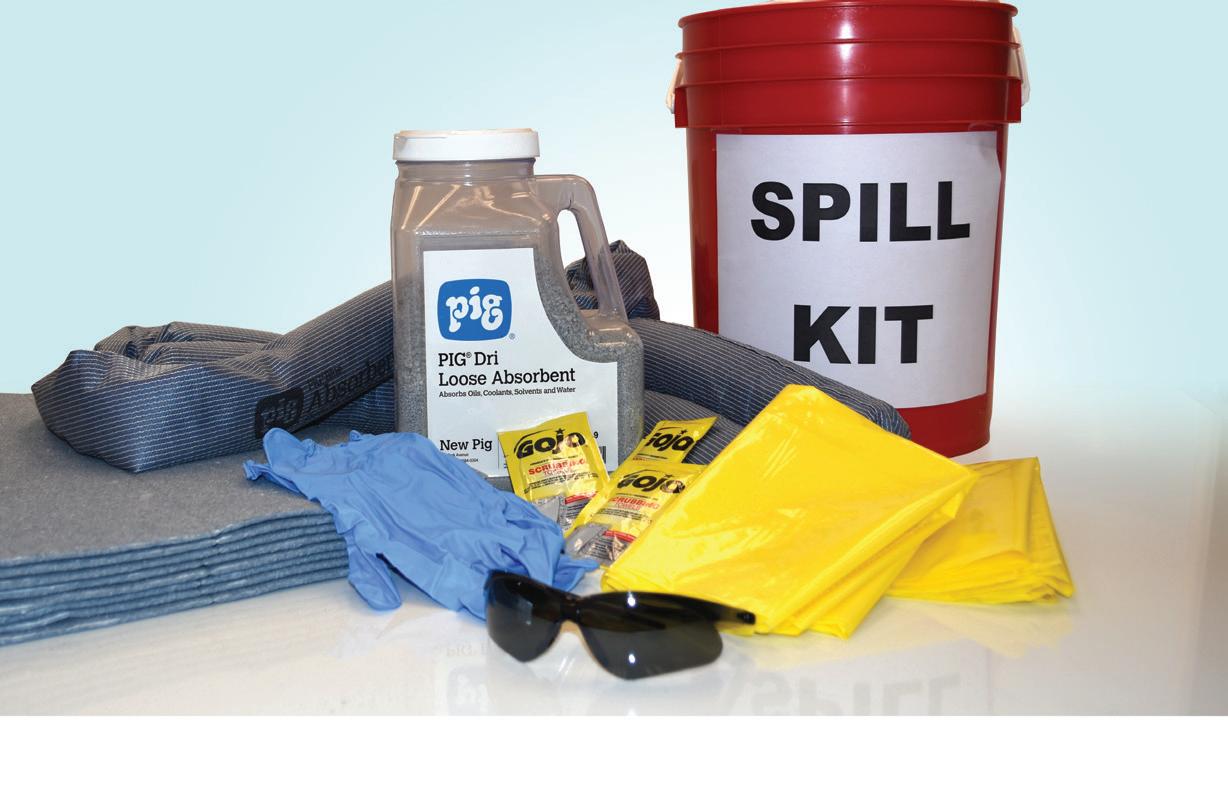
Anyone using chemicals should be trained on safe use, transportation, potential exposure risks, proper PPE, how to read a safety data sheet and how to safely and properly clean and report spills.
Establish rules and procedures pertaining to employee requirements for and use of any safety-related equipment and attire. Provide training and enforce the proper use of clothing and personal protective equipment (PPE) based on each employee’s role.
Establish snow-specific training for all fulltime, part-time and seasonal employees that is conducted at a minimum before, during and after the season. The training must include verification and knowledge through testing or demonstration.
When hiring subcontractors, verify that they have safety procedures and training programs in place. You don’t want unsafe practices from someone you hired to come back to bite you. Just remember: You can’t train your subs!
Drugs and alcohol don’t mix when you’re behind the wheel. Establish and document drug and alcohol policies that must be followed – just make sure they don’t conflict with state and federal laws.
Schedule safety meetings at least three times—before, during and after the season. Additional meetings may be needed if policies or procedures change. These meetings are a great time to review existing policies, any incidents or near-misses and revise your program as needed. All meetings must be documented and attendance recorded.

The final component of SIMA’s safety standard focuses on monitoring and documentation. It’s a waste of time to create a program and not use it.
1 AWARENESS
Once you have safety rules and procedures laid out, share them with all full-time, part-time and seasonal employees during orientation and refresher training programs.
2 ACKNOWLEDGMENT
Provide a copy of the rules and require receipt of acknowledgment—in writing.
3 ADHERENCE
Companies must have a plan to make sure employees are in compliance with the general safety practices built into the standards.
4 ID, CORRECT, PREVENT
Companies must have a method to identify, correct and prevent hazardous conditions and operational deficiencies in compliance with the general safety practices.
5 REPORT, TRACK, RESOLVE
Whether you have a standard or not, accidents happen, which is why the standard requires an organized incident reporting, tracking and resolution process.
6 VERIFY
Companies must develop documentation and processes to visually verify safety training for each role, including sign-off by a qualified supervisor or instructor.

Redefine what your half-ton truck can do. The SnowEx® RDV™ V-Plows have the features and benefits of the larger plows but are specifically designed for half-ton trucks. They are constructed of high-strength, low-alloy steel, making them stronger and lighter than conventional steel.
Available in powder-coated steel or stainless steel, the plows configure to varying vehicle heights for optimum performance on some of the most popular truck models.
SCRAPE MAXX™ DOWN-FORCE KIT
Scrape Maxx down-force is an exclusive, standard feature that gives SnowEx truck plows* the ability to apply downward force to bust through hard pack and maximize to-the-pavement scraping performance.
*Not available for UTV plows



BY PATRICK WHITE // Photos by Scott McKenna, Scaling Creative
+ WALL OF FAME
Team education is a priority
LITTLE GESTURE MEANS A LOT
Flags from teams’ native countries give them a touch of home
PAGE 16


A company’s brand identity is usually something outward-facing— a tool mostly used to communicate to clients and prospects.
It’s telling that emi landscape owner Bob Marks, CSP, ASM, has “The emi Way”—a three-pillar value system—in large letters on the wall behind his desk. It’s there to remind him and everyone inside the company that emi’s identity starts with them.
Marks grew up with emi, literally. His stepfather, Ed Wigfield, started the company on the outskirts of Allentown, PA, in 1983, the year Marks was born. “Once I was old enough to do any kind of work, I was working,” he recalls. “In the winter, my mom (Cindy Wigfield) and I were the only shovelers in the company.”
When Marks turned 16, he became a sidewalk team leader and recruited his friends. “It was an easy sell because we’d be out all night working together, which was fun, and then we’d have an excuse to skip school the next day.”
After graduating from high school, Marks went to Universal Technical Institute in Houston, TX, to become an auto mechanic. From there he was accepted into Audi’s manufacturer’s training program, which happened to be based in
Allentown. So, he was back working at emi. “I went to the Audi program from 7 a.m. to 2 p.m., and then worked from 3 p.m. to 10 p.m. plowing snow, or whatever else had to be done.”
After completing the Audi training, Marks joined a dealership in the Washington, D.C. area, where he worked for almost five years. Around the four-year mark, Ed broke his hand when working on a piece of equipment. Some months later, as that hand was healing, he broke his other arm. “So, he’s got one arm he can’t use at all, and his other hand is 60% of what it’s supposed to be,” Marks recalls. “I called work and told them I needed to take a week’s vacation and then drove home to help out. I always joke that I was literally his right-hand man.”
and when he was home for a visit that summer, Ed and Cindy proposed that he join the company full time and start to learn the business, which he did in 2009.
At the time Marks returned, emi had become a commercial-only, but still relatively small, operation. While the idea was that “someday” he would take over the company, the timeline “was very vague,” Marks relates. For four years, he learned every aspect of the business. The company began to grow, building a larger shop in 2013 and expanding to 10 to 15 year-round employees. “All of a sudden we had overhead that, honestly, was tough to cover at our size,” he acknowledges. While he was still in the field about 90% of the time, and still maintaining the company’s vehicles and equipment at night, Marks set out to really sell emi and continue to grow the company. “We had a couple of clients that were also growing. We had to grow with them, or we were going to lose them. So we were in a weird spot: either we had to grow or we had to get smaller.” Marks flourished in the sales role.
Marks helped guide the crews through the spring landscape season, Continued on page 14




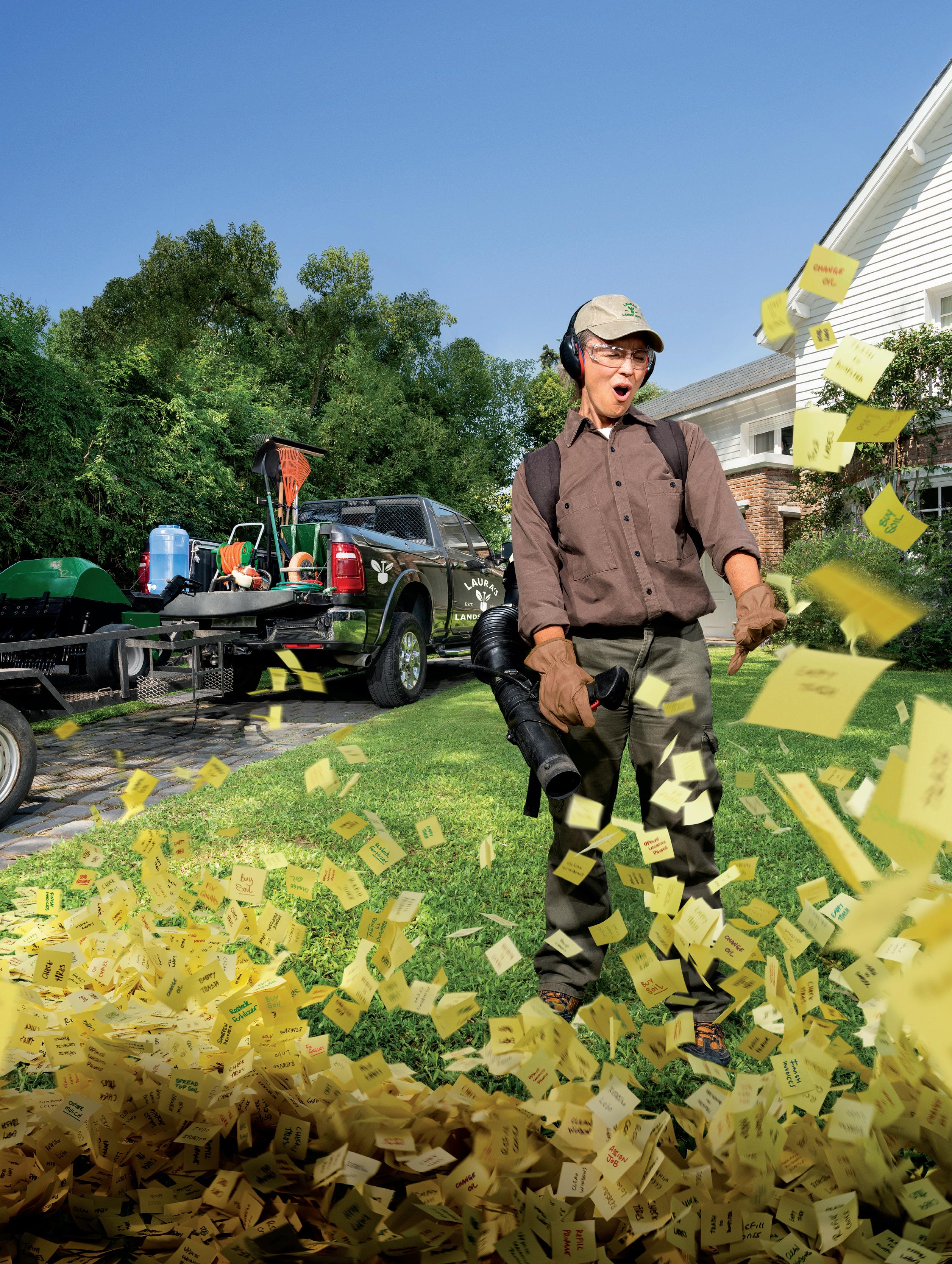


Continued from page 12
New accounts came and the company added industrial properties to the portfolio. That meant larger equipment and more people. But it also revealed some internal cracks. “I felt like we were growing the company, and I loved it,” says Marks. “But we didn’t plan to grow so big that quickly.”
By 2020, in the midst of Covid, Marks came to an inflection point. “I had become the face of the company. I said ‘we need a plan for the future so we can be succesful.’ I needed a light at the end of the tunnel because I felt like I was just treading water.”
A purchase agreement at fair market value was worked out and Marks officially took over in 2021. His mother remains the company’s CFO. Marks credits his stepfather with instilling a work ethic in him but says the two simply had different approaches to running the business: “Ed was very good at operations, and I always say that I
couldn’t have accomplished what Ed did. I don’t think I had that entrepreneurial grit to start a company from nothing. But then as we grew, I think that’s where my skill sets came in, to manage people and kind of put more pieces together. We had just gotten too big for one owner to manage everything by themselves.”
Today, emi has grown to 60 year-round employees (and about 120 crew members, plus subcontractors, during snow events) and is approaching the $10 million revenue mark.
Having good people has allowed the company to grow successfully, he emphasizes: “And we’ll always continue to grow, as long as we find good people and good clients willing to pay us so that we can pay our people.”
Marks says that when the company really started to expand, he read “Traction” by Gino Wickman. One question the book poses to business

STORM READY: emi’s “go bags” have everything the teams need to be ready for the storm, from gloves, warm socks, high-vis jackets to work tools. Scan the QR code to learn more.

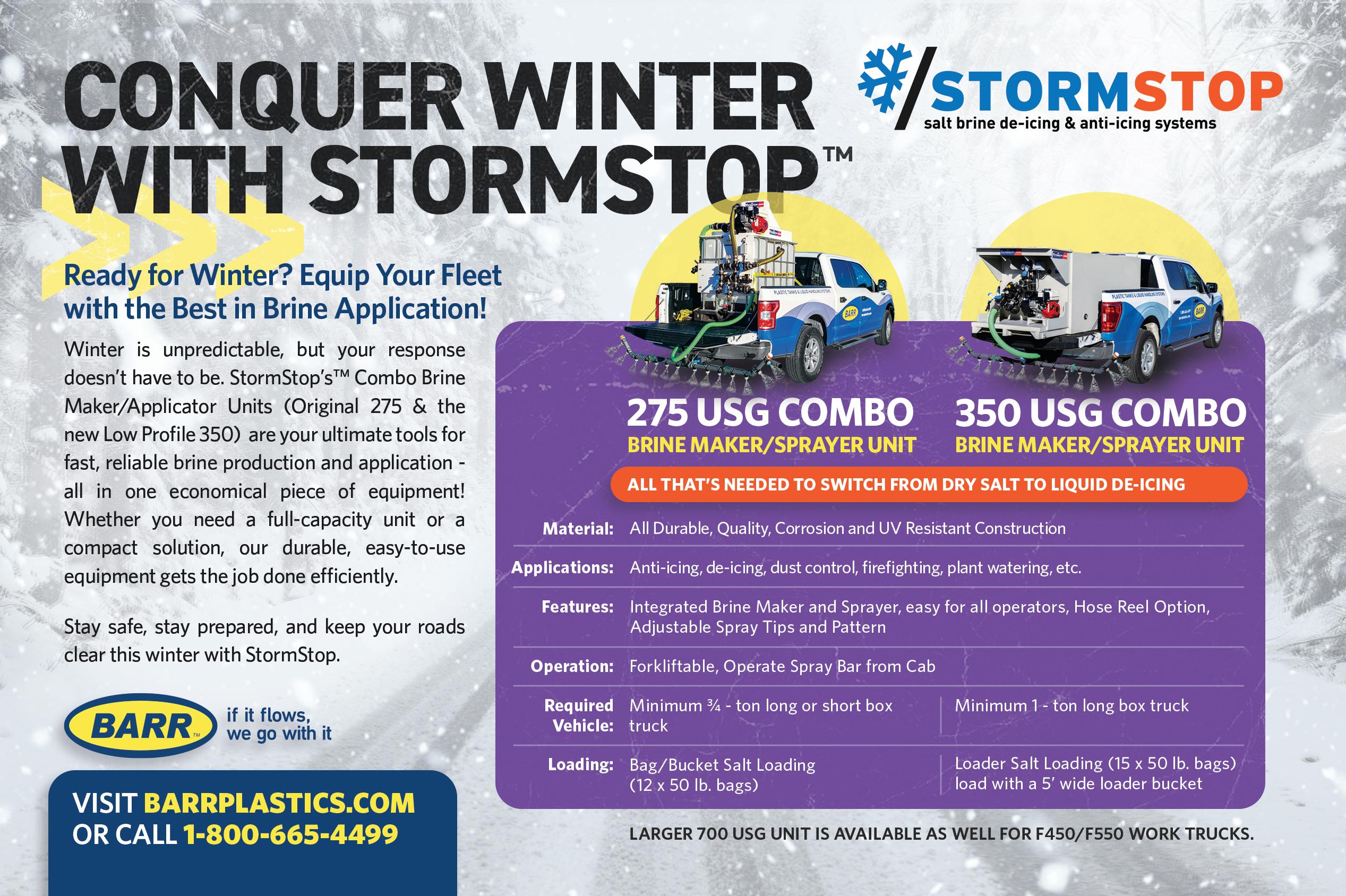

leaders is: What are the three things you do that your competitors can’t do all three of? That question led to the creation of “The emi Way.”
People first. “This is not unique, but we make it a priority to take care of our people really well,” Marks explains. “I learned early on that hiring is difficult, so when we find the right people, we’re going to go over and above to keep them. We may not be the biggest in our region, but we try to be the best. And you can’t do that if you’re retraining 70% of your workforce every year.”
Part of retaining employees comes down to pay, but it’s also about making sure there are opportunities for them to build a career, taking care of them on the job and being respectful of their time.
“It’s just a lot of little things,” Marks says.
When calling in seasonal workers for storm events, the company operates under the 48-24-12 rule. This gives an initial notice 48 hours in advance that
a storm is forecasted; a more specific update 24 hours in advance, and then even more updated information 12 hours out. “This helps people organize their lives a little bit better, and for us, it has eliminated some excuses that they weren’t prepared,” says Marks.
Once employees are actually called in, the company pays them, even if the snow event is delayed or never materializes. “We always pay a minimum of four hours; that’s to recognize what it took for them to get here when we asked them to.”
Another sign of respect and retention booster: emi pays for 100% of health insurance costs once an employee has been with the company for three years. “We feel like they’re part of the team; part of the family, so we’re going to cover that,” says Marks.
All of these “little things” have led to increased tenure, with more reaching 5, 10, 15 years of service. “It’s not all about material things, but there’s a lot
of new cars in our parking lot, and we’ve had a lot of people who have started families and bought homes and all those things. We want to be the champion for the blue-collar worker,” says Marks. “I’ve done all these things; I understand what it means to work in 20° weather, all night long.”
And Marks emphasizes that the philosophy of “putting people first” extends to its clients and vendors: “We don’t switch vendors very quickly. We don’t nickel and dime our vendors—if we feel like they’re giving us an honest price and they give us the service that we’re looking for, we want to continue working with them.”
And if a client needs a favor, “we drop everything and get on it,” says Marks. One example came when President Biden visited the headquarters of Mack Trucks, an emi client. “We had 48 hours’ notice, and they gave us a laundry list of stuff to get ready, and we Continued on page 16



Continued from page 15
put the whole company there to make it happen,” he recalls.
Fanatical attention to detail. The emi Way’s inclusion of the word “fanatical” when discussing attention to details is a sign of how seriously the company takes getting the little things right. This is what people notice, says Marks, who cautions his crews against doing “just a 90% job.”
The attention to detail starts and ends at the company’s shop. “When our teams leave here, they have a whole procedure to know what needs to be on the truck. When they get on the job site, they have site maps with descriptions of the problem areas. And when they come back, there’s a whole end-of-shift procedure. Attention to detail isn’t just the work we do—we try to focus on it at every step along the way.”
Marks uses the analogy of “broken windows policing,” where even smaller issues are corrected, because it sets a standard and helps prevent larger problems.
Employee trainings include the bigger things—safety, equipment operation, etc.—but also the small things. “For example, we talk about dealing with the ‘no man’s land’ area along the curbs that meet a sidewalk,” says Marks. “We don’t want people wondering: is that the plow truck’s responsibility, or is it the sidewalk team’s responsibility? When it’s more than one person’s responsibility, it’s nobody’s responsibility. A client can

Look up in the emi landscape shop and you’ll see a variety of flags hanging, representing the nationalities of the company’s crew members. emi landscape owner Bob Marks admits he was surprised by the overwhelmingly positive reaction to this small gesture. “I guess I shouldn’t have been, but people really loved it. A lot of our team members are first generation in the US, and sometimes it’s easy to forget that. We all spend a lot of time at work, and they’re far away from their home, so this is just a way to make it feel a little bit more like home.”

get out of their car in a clean parking lot, and there’s a clean sidewalk, but if they’ve got to walk through two feet of snow to get to the clean sidewalk, it doesn’t matter. It might as well not have been done at all.”
We do what we say we are going to do, no excuses. This component of The emi Way can be difficult— and sometimes expensive—to live
Investing in continuing education has helped emi landscape build a more knowledgeable team to better serve its clients. Most notably, this includes SIMA’s ASM (Advanced Snow Manager) and CSP (Certified Snow Professional) designations. “I think the certifications are a big deal,” says owner Bob Marks, CSP, ASM. “We’re up to 25 or 30 employee certifications. I think this legitimizes people’s careers.”
The company shows off these credentials at its headquarters. “Here’s this certification that not many people have, and we’re willing to invest and we pay for them to earn it,” says Marks. “We choose seven or eight people a year who we think have earned the opportunity.” While the goal was originally to improve the teams’ skills and performance, Marks says that a side benefit has been reduced turnover. “I think we were up to 20 people who had the ASM designation before we lost a single ASM-certified employee.”
up to. But it’s essential, Marks says. “Whatever we agree to, whether we’re going to make money or lose money, that’s what we agreed to, and we’re going to follow through every time.”
For example, the company has clients that never close. “It doesn’t matter how much snow we get. We had 27 inches in 24 hours once and roads were closed, but they were still moving

trailers. So, our people kept their properties running.”
On the company’s end, it means continually investing in the right equipment so that the job can get done, no excuses. After last season, the company’s fleet of heavy equipment (48 units in all) was starting to age, so emi replaced 80% of this equipment over the summer. “Our oldest piece of heavy equipment will now only be three years old,” Marks says.
At the same time, it nearly doubled its fleet of hydraulic wing plows by purchasing 17 new units. “And we connect these plows with the Storm Vision system that measures and maximizes our efficiency. So now we can produce and scrape cleaner and faster,” he notes.
While these purchases are a major financial investment, they’re critical to being able to serve clients the way the company promises. And Marks shares news about these investments

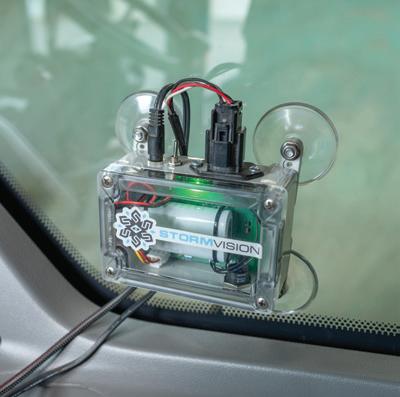
with clients and prospects, so that they see the investment emi is making to be prepared to service their sites.
Sometimes walking the walk and staying true to the company’s promises and identity also means having hard discussions with clients. “We fired a client last year because they wanted to decline service before the first real snowstorm in three years, and we had dedicated equipment and dedicated personnel to their site,” Marks says. “There’s no way I could look at our team, who put in all this effort to be
ready to handle this huge warehouse, and then let this happen. I told them, ‘This client doesn’t respect what we do, and therefore they’re not the right client for us.’ It was a difficult decision to make. I didn’t want to give up that revenue but as a leader of the company, I set very high expectations for everyone in the company. And then how can I talk the talk and then not walk the walk?”
Patrick White has covered the landscape and snow and ice management industries for over 25 years. Contact him at pwhite@meadowridgemedia.com.



BY LAURA MEANS & CARLOS del POZO
At this summer’s SIMA Symposium, we presented a session on how the Brian-Kyles Landscaping team integrated technology and flexibility into its approach to staffing for snow season, despite the fact that the unpredictability of work hours and weather; the physical demands; and sometimes the specialized skills and training needed can narrow the hiring pool. Following are three strategies that Brian-Kyles put into place to mitigate these challenges:
Having a well-defined pay ladder (see example below) allows you to objectively start employees at the right level of compensation, while also showing them the opportunities that exist for a raise as they work to develop their skillset. This can be both a recruiting tool and a retention tool.
Somewhat paradoxically, companies with seasonal busy periods should actually be hiring year-round. By
Weather fluctuations. Unpredictability makes it challenging for companies to maintain a stable workforce. Sudden increases in demand can lead to a scramble to find additional workers on short notice. Conversely, during milder periods, a surplus of staff may have little work to do, leading to inefficiencies and potential dissatisfaction.
Unpredictable hours. Snow removal often requires workers to be on call 24/7. This irregular schedule can be difficult for employees to manage, particularly those with other commitments or responsibilities. The need for flexibility can deter potential hires who prefer more consistent working hours.
Physical demands. Workers must be able to handle heavy equipment, clear large areas of snow, and apply deicing materials, all while battling cold temperatures and hazardous conditions. This physical toll can lead to fatigue, injuries, and overall job dissatisfaction, making it harder to find and keep employees who are capable and willing to perform such demanding tasks.
Specialized skills. Finding workers who have the specific skills and certifications required isn’t always easy, particularly on short notice. Training new employees to meet these standards takes time and resources, which can be difficult to manage in an industry characterized by rapid fluctuations in demand. This need for specialized skills further narrows the pool of potential available hires.
doing so you can bring on “A” players full-time and train them up in the offseason, while you build a deep bench of seasonal part-timers you can call on throughout the year. BrianKyles uses Team Engine to automate 80% of their workload to keep the
recruiting process moving at all times without requiring too much of the HR manager’s daily time and attention.
Brian-Kyles has built a diverse portfolio of services and specializations with complementary peaks and valleys in seasonality. When landscaping slows in the winter, they’re busy serving snow removal clients, and vice versa. This approach allows them to keep more employees on full-time throughout the year, which makes the opportunity more reliable and attractive to them.
We concluded the session by discussing three things that every snow season playbook needs in order to be effective. Incentives. Snow fighters aren’t looking for luxurious or expensive rewards; they just want perks that make the hard work a little bit easier or more enjoyable. Brian-Kyles
promises their snow crews consistency in pay, flexibility with varying shift schedules, and adds in winter giveaways.
Workload balance. When you’re pulling long hours in challenging conditions, it’s easy to get burnt out. Prevent your snow fighters from burning out by ensuring you always have enough people on staff to keep the workload balanced. Brian-Kyles asks new hires to check the box for the shifts they’re open to working and then tags each worker with the appropriate group in Team Engine:
• Operators 24/7
• Operators 12-8 + weekends
• Operators 4-12 + weekends
• Operators 8-4 + weekends
• Operators - call for availability
This lets them hire people who may not be available for every shift but are willing to work certain times. They also try to stick to 12-hour shifts (or 16 at most) to keep their workers safe and well-rested. This courteous approach to scheduling helps them build crews they can always depend on.
Communication. Having an efficient and effective communication system in place is key to a successful snow operation. You need to be 100% sure that your messages to crew members are being delivered and read. Your crew also needs to be able to reach you quickly and easily so they can communicate their availability, as well as alert you to issues in the field.
Brian-Kyles uses Team Engine for this functionality and says the ability to text groups as well as individual team members has hugely improved communication with their snow crews and made them more efficient on the whole.
Previously, we had to keep track of when our employees could work in Excel, and had to always go back to it when a storm was coming to figure out who to call. Now we can select the group we want to reach and know the right employees will get the message.
Technology and flexibility can seriously improve your ability to recruit workers for snow season. By implementing efficient, year-round hiring practices
and offering incentives tailored to the needs of their snow removal workforce, Brian-Kyles Landscaping has set a benchmark for the industry. Their approach highlights the importance of adaptability, continuous engagement, and leveraging automation to streamline processes.
Ultimately, the success of snow and
ice management companies hinges on the ability to anticipate and respond to the unpredictable demands of the season with a motivated and capable workforce ready to tackle any storm.
Carlos del Pozo is co-founder of Team Engine. Learn more at www.teamengine.com. Laura Means is former HR manager for Brian-Kyles Landscaping.


By DANNY KERR
Sick of preventable project delays? Tired of hearing “that’s not my job?” This game-changing leadership tool is the answer to your accountability woes.
Being a snow contractor is not for the faint of heart. It’s natural to look at business challenges and blame the usual suspects: a terrible labor market and all-too-common supply issues.
But there is one overlooked reason contractors run into project delays, company drama and poor profit—a lack of staff accountability.
Unlike supply and labor shortages (which are largely out of your control), staff accountability is an area where you can take full ownership…and it’s surprisingly easy to fix.
In this article, we’ll show you why poor accountability is so rampant in our industry and how to identify if you have a staff accountability problem; and then walk you through ways to improve staff accountability using a proven method.
For a snow removal business to be successful, a lot of operations need to function in harmony. When they don’t, the reason can often be found in your approach to accountability.
So, what is accountability, exactly? It’s everyone doing what they say they’ll do and taking responsibility for their jobs.
If any of the below feel familiar… you probably have a problem within your organization.
1 Vague goals. You’ve set some standards. Maybe you even have a few processes in place. But try as you might, you can’t get your team to follow them.

There’s a lot of flexibility when setting up a GSR for your business. Regardless of how you use it, there are some key aspects that shouldn’t change:
Consistency: The meeting schedule should be set in stone. Whether it’s weekly or bi-weekly, it should occur at the same time, every time.
Preparation: To make the meeting productive, your direct report should show up with their plan ready and all metrics completed, which forces them to be dialed in to what’s happening in their world.
Specificity: “Do my best” doesn’t cut it here. Each goal for the week should be crystal clear so you can see right away whether it’s completed or not. Evaluating success should be black or white. No gray zones.
Focus: This plays out in a couple ways, on both sides of the table (or screen, if you meet virtually). To avoid overwhelming your direct report, have them aim to achieve just one or two high-priority goals at a time. In return, during the GSR meetings, give them your full, undivided attention.
2 Blame games. When things go wrong, nobody steps up to own the problem. Instead, there’s a lot of finger-pointing and buck-passing.
3 Rogue actions. You asked for a new client’s driveway to be plowed. They painted the plow instead. Alright, that’s an outlandish example, but you get the idea.
4 Entitled mindsets. Not to be mistaken for ambition (which is a good thing), you’re getting requests for raises, promotions or other demands out of a sense of entitlement.
5 Stagnant business. Your company seems like it’s plateaued. You may still be busy, but it feels like your
growth is standing still, and your team is just going through the motions.
Most contractors feel overwhelmed by the thought of making accountability a more entrenched part of their operations. It’s common to worry that:
• When you have to crack the whip…nobody will like you.
• You’ll get stuck doing a bunch of handholding you don’t have time for.
• You’ll lose people. It’s already so difficult to find staff, you can’t afford to give up the ones you have, right? (Trust us when we say, you definitely can.)
But the real underlying reason
you’re struggling to hold accountability? We’re going to get real for a second and hit you with a hard truth. You ready?
It’s you. Accountability rests with you. You’re the leader, and if your staff feel distanced from your company’s vision, then your expectations aren’t clear. And it’s your job to fix it. (We did say this would be simple…not necessarily easy.) It’s time to step up.
There are proven strategies for getting from goal to result without losing your way.
The good news is, becoming an organization that embraces — rather than shuns — accountability doesn’t have to be painful. You just need a good system.
ENTER:
(GSR), a leadership tool that bridges the gap between where you are and where you want to be. It provides a framework for accountability within your company and helps define precise
action items for nailing goals, while giving you visibility into the state of the projects you do for clients as well as the implementation initiatives you undertake internally. Because you can’t manage what you can’t measure.
The GSR system centers around regular one-on-one meetings between you and your direct report, where you’ll look at their status in three timeframes:
Past: What they’ve done
Present: What they’re up to now
Future: What they intend to do next
There’s a lot of flexibility when setting up a GSR for your business. Regardless of how you use it, there are some key aspects that shouldn’t change (see GSR—Keeping Consistent at left)
How to run a GSR meeting?
Your GSR system should be molded to fit your organization’s needs, but some aspects will be similar for everyone. Set aside time for the direct report to fill in the GSR doc and for their supervisor to review their prep. The key is to update the previous goal and results and plan for next week’s goals.
There is one vital question you want to be sure to include: How are you doing?
In every GSR meeting, you would have a check-in, go through the goals and review performance, plan for future goals, and talk through any administrative items.
There is one vital question you want to be sure to include: How are you doing?
Continued on page 22

Snow removal professionals rely on their equipment to be ready when they’re needed. That’s why the leading contractors trust the durability and quality of the only wear parts backed by a satisfaction guarantee. Have confidence in your equipment all season with Winter Equipment.
Continued from page 21
This is the most important question in the entire meeting! Beyond just helping to keep projects on track, GSR systems are about ensuring your staff knows they’re supported and you’re looking out for them.
Developing your relationship with your direct is pivotal. This system isn’t just about them working to achieve your goals for your company. It’s also about you supporting them to achieve their goals to develop their career. For example, most production managers are under-supported firefighters: overworked and frustrated. A little love goes a long way.
In our experience, employees generally respond very well to the newfound support and empowerment they receive through a GSR system. High performers want to have clear goals and deliverables.

We have free resources and tools that have helped improve staff accountability for over 1,537 leading contractors across the US and Canada. To help you implement GSR, get these free industry-tested resources and tools that you can use right away to keep your team accountable.
While you’ll only be holding GSR meetings with your direct reports, the system can have a knock-on effect throughout the entire organization. Productivity becomes more efficient. Employee retention improves. Staff develop faster.
Measurable results help everyone stay on track, which means you spend less time firefighting. Your team goes from being reactive, to being proac-
tive. Your profit margins improve. And your phone quits ringing at all hours of the day and night.
Danny Kerr is a founder of The Breakthrough Academy, created to help you evolve from a doer of all things to a builder of smart systems and a leader of great people. Learn more at btacademy.com.
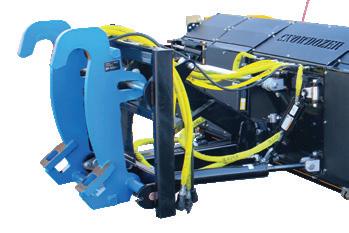


Everyone’s been waiting for it and the rumors are true! KAGE’s latest invention, the new and improved wing plow, is now on the market!
“The SnowDozerTM Wing Plow is the first of a new generation of snow plows and pushers
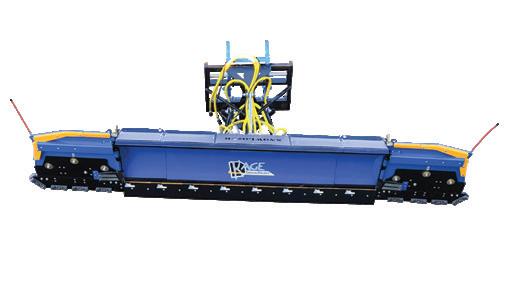





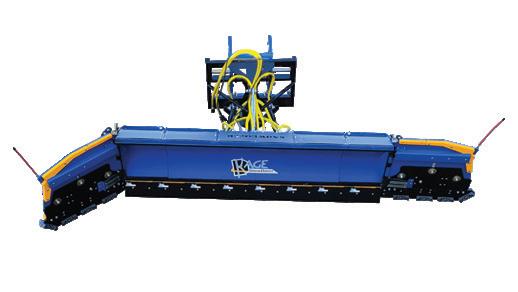



Approachable for all types of users, regardless of experience, the all-new PRO-PLOW 3 straight blade plows move snow efficiently season after season. Offered in powder-coated or stainless steel — the first ever stainless steel straight blade from Western Products — the PRO-PLOW 3 line features a 70-degree attack angle that clears residential driveways and parking lots with ease.
• Rugged 29" tall, 14-gauge moldboard
• 7'6" or 8' widths for Class 2 & 3 trucks
• 3/8" thick high-carbon steel cutting edge INTRODUCING THE ALL-NEW PRO-PLOW ® 3 STRAIGHT BLADE PLOW



BY MICHAEL SLOOPKA
Effective negotiation is a critical skill for anyone operating in the snow and ice management and landscape industries. As businesses and people strive to secure contracts, manage costs, and maintain strong customer and vendor relationships, the ability to negotiate successfully can make a significant difference. This article distills and reinforces critical concepts, practical tips, and proven strategies from my two presentations at the 2024 Snow and Ice Symposium in Pittsburgh.
Negotiation is not an innate talent but a learned skill. It’s a disciplined process designed to determine what is of value to the other side without conceding things that cost you or your company money.
Negotiation is the essence of progress, moving the parties involved toward mutually beneficial outcomes. Mastering this art ensures that you achieve your goals and that the other side feels satisfied, leading to sustained success and reduced stress.
Many negotiators need to avoid common traps that hinder their
success. One major mistake is assuming you know what the other side wants. This assumption can lead to offering concessions that are either unnecessary or unappreciated. Instead, always strive to understand the other party’s needs and wants through effective questions and questioning techniques.
Another frequent error is narrowing the negotiation to a single issue, often price. This approach creates a win-lose scenario.
Successful negotiators broaden the scope, introducing alternatives and focusing on non-monetary elements that can add value. Remember, price is only one aspect of the total deal.
Successful negotiation involves a strategic approach. Here are some key strategies to enhance your effectiveness: Research and preparation. Always begin with thorough research. Understand the other party’s needs, constraints, and goals. This information is crucial for crafting your negotiation strategy.
Effective questioning. Asking the right questions is a powerful tool. For instance, when faced with a “NO,” use the secret question: “Under what circumstances would you agree to...?” This opens the door to understanding their objections and finding a path forward.
Building opening negotiating positions. Your opening negotiating
position should be based on your desired outcome (your goal) but also be realistic, reasonable, and attainable. Aim high, but ensure your demands are reasonable to set the stage for productive negotiations.
Creating alternatives. To be a successful negotiator, create the perception of having alternatives. This strengthens your position and provides leverage during the negotiation process.
Here are some essential tips to improve your negotiation outcomes: Understand decision-making processes. Know who the decisionmakers and influencers are and their criteria and timelines for making decisions. This insight helps tailor your approach to meet their specific needs.
Focus on value, not just price. Highlight the unique value your service provides beyond the cost. Benefits such as reliability, quality, and service can outweigh initial price concerns.
Use proper terminology. Avoid terms like “quote” or “price quote” when negotiating. Instead, use language that conveys value and professionalism, such as “price proposal” or “investment.”
These strategies can be particularly effective in the snow and ice management industry. For example,


when negotiating a winter maintenance contract, ask the potential client about their decisionmaking process: “Can you outline the criteria your company uses when selecting a winter maintenance contractor?” This question shows your interest in meeting their needs and provides valuable insights into their priorities.
Additionally, emphasize the comprehensive nature of your services. Instead of focusing solely on the cost, highlight how your proactive maintenance strategies prevent costly downtime and enhance safety, ultimately saving the client money and mitigating potential problems in the long run.
Negotiation is a critical skill that can significantly impact your success in the snow and ice management industry. Understanding and applying the principles and strategies outlined
Consider exploring my three negotiating coaching packages and digital learning product bundle to enhance your negotiation skills and outcomes further. With over 30 years of successful negotiating experience across various industries, I offer tailored coaching that addresses your specific challenges and goals. My valuable digital product learning bundle provides three E-books, a negotiating personality type and corresponding negotiating style self-assessment questionnaire and interpretation results, and my MP3 Audio Learning Program with my best verbal phrases, questions, and questioning techniques designed to support your ongoing development as a negotiator.
Visit negotiatingcoach.com and subscribe to receive my E-book, “ Negotiating Insights and Seven Tips ” These resources are designed to provide practical, actionable advice you can implement immediately to see results.
in this article can enhance your negotiation effectiveness, achieve better outcomes, and build stronger, more productive relationships with clients and vendors.
Remember, everything is negotiable— except not negotiating. Embrace the art of negotiation, continuously refine your

The first winter tire for tractors, Nokian Hakkapeliitta TRI , makes sure your winter contracting has all the grip and control you need –with or without studs.




skills, and watch as your business thrives. Don’t hesitate to contact me for personalized coaching solutions and additional resources. Good luck with all your negotiations!
Michael E. Sloopka is the founder of negotiatingcoach.com.
The first winter tire for wheel loaders, Hakkapeliitta Loader, offers you speed, stamina and control. Unmatched grip and durability in the market –both winter and summer.

Visiting other companies to tour their operations, learn from their teams, and get fresh ideas is so important to me.
We’ve grown the square footage that Grunder Landscaping Co. services for snow and ice tremendously in the past four years. From next to nothing to 15 million square feet under contract this year. I hate to admit that it took us many years in business before we truly embraced snow removal services as a key part of our business when today it’s become a profit center for us and a service that my team actually enjoys offering, too.
Do you know what it took to make that change? Of course, it took investments and sales, and all the things that come to mind first. But the real difference maker was a little less visible: a change of mindset.
The change of mindset didn’t happen spontaneously. It came from seeing other companies that were doing it and loving it; from our President and COO Seth Pflum coming to me and pointing out all the ways that getting into the snow business could benefit our team and the company. To ensure we were setting ourselves up for success, we began our first big snow season with a few ideas we R&D’d (robbed and duplicated) from other successful companies:
Snow hour incentives
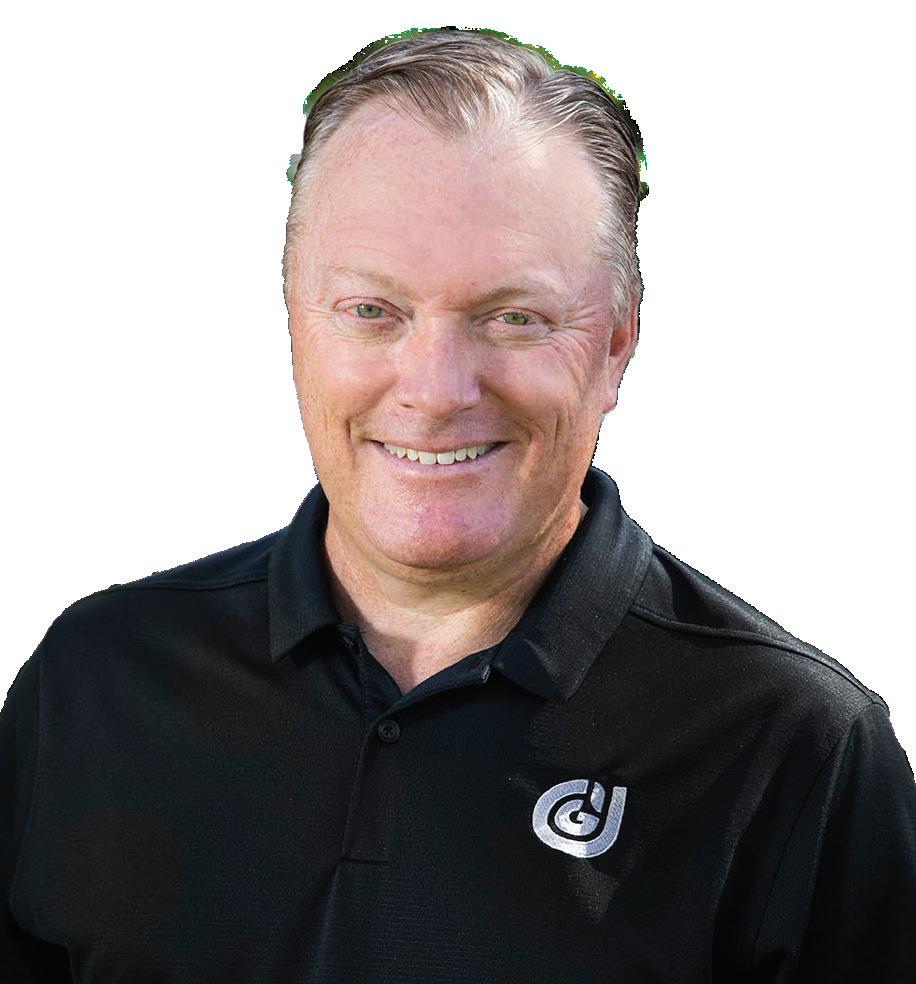
We pay our team 30% on top of their usual wages for any hours worked on snow or ice. This makes snow hours more lucrative for them, and we factored these wages into our costs when setting our pricing. We knew the extra money would make the unpredictable hours and long shifts more palatable for our team.
That’s proved true: our team genuinely gets excited when snow or ice are in the forecast, largely because they know their personal earning potential increases if we have a great snow season. This pay strategy has aligned our team’s best interests with the company’s; it ensures we’re all working towards a common goal.
The whole team is involved
Snow needs to be central to the company culture in order for it to be successful. Many companies talk about their team
as snow warriors, and we feel like this couldn’t be truer. Our team goes into battle together against the elements when snow rolls in and we’re a unified front against it.
Every team member has a role to play.
We have salespeople who work with sidewalk crews; our administrative team stocks the shop with grab-and-go snacks and energy drinks for crews; I drive around to check in on our crews; and Seth is often running a loader on one of our clients’ properties. From the top of the organization to the entry-level team member, each person has a role in the success of our snow operation.
We prepare early
Our friends at RJ Lawn & Landscape, who hosted our annual event GROW! in 2024, hold an annual snow rodeo where they train their team on any new equipment for the upcoming season and review best practices. They do it early to ensure that no matter when the first snow hits, their crews are ready.
We don’t do snow training quite as elaborately as they do, but we adapted their mentality and approach to training on snow equipment with our regularly scheduled trainings and prepare properties well before the first snow is in the forecast.
We don’t have it all figured out at Grunder Landscaping Co., far from it. We’re still constantly learning from other companies and finding ways we can get better in all aspects of landscaping and snow removal. It’s why visiting other companies to tour their operations, learn from their teams, and get fresh ideas is so important to me. It’s also why we host our GROW! Annual Conference: to gather pros together to learn and to put the spotlight on a well-run company that others can learn from. This year, we’ll head to Hidden Creek Landscaping in Columbus, OH on February 24-26. Will I see you there?
P.S. Early-bird registration for GROW! 2025 ends November 1. Register before then to lock in the best price for your ticket. www.growgroupinc.com/grow-2025

The recent federal court injunction does not alter state or local regulations concerning non-compete agreements.
As you may have heard, any noncompetes your company has in place could be on the chopping block. The Federal Trade Commission (FTC) had planned to implement a new rule on September 4, 2024, aimed at restricting non-compete agreements beyond just state or local regulations. The rule was designed to limit the use of non-compete clauses in employment contracts, with the goal of enhancing workers’ ability to change jobs freely and fostering greater competition.
However, the FTC faced a significant setback on August 20 when a federal court in Texas issued a nationwide injunction blocking the enforcement of this rule. Judge Ada Brown, who issued the ruling, criticized the FTC’s reach, determining it had overstepped its authority and found the rule to be excessive and unreasonable. As a result, the implementation of the noncompete rule has been halted across the United States.

Jared Nusbaum is an attorney with the law firm of Zlimen & McGuiness, PLLC in St. Paul, MN. His practice areas include employment law, small business law, litigation, and bankruptcy. Email him at jnusbaum@zmattorneys.com.
Ellie Sammon, a law clerk at Zlimen & McGuiness, PLLC contributed to this column. Sammon is a 2L at the University of St. Thomas School of Law.
The FTC has signaled that it’s combating the injunction by challenging non-compete agreements it considers restrictive to workers’ job mobility, and it may appeal the decision. In short, while still enforceable under federal law, your current noncompetes are not out of the woods.
Status of non-compete agreements: With the injunction in place, existing federal non-compete agreements remain valid and enforceable. Employers can continue to uphold these agreements as they did before the rule was proposed. Of course, your state may have different rules regarding non-competes that are not affected by this Texas court ruling.
Notification requirements: The rule’s requirement for employers to notify employees and former workers about the non-compete clause provisions is no longer applicable. Employers who have already sent out these notifications may seek legal advice to determine if they can retract them.
Ongoing legal challenges: This ruling is part of several lawsuits challenging the FTC’s non-compete rule and is the first to

have a nationwide impact. Although this decision provides a temporary reprieve for employers, the final resolution of the legal challenges is still uncertain.
State and local regulations: The recent federal court injunction does not alter state or local regulations concerning noncompete agreements. For example, where I practice in Minnesota, the current status means that the state’s ban on non-compete clauses in employment contracts remains fully enforceable. Even though the FTC’s new rule has been halted at the federal level, Minnesota’s restrictions on noncompetes continue to apply. Employers in Minnesota must adhere to these statespecific regulations, regardless of the federal ruling.
This decision appears to be influenced by the June ruling that curtailed the Chevron deference—a principle that had previously allowed agencies to interpret laws and create regulations. It is important to keep in mind that the injunction on the FTC’s rule does not mean that noncompete agreements are allowed everywhere; state and local laws can still regulate them. For example, in addition to Minnesota, North Dakota, Oklahoma, and California have enacted bans on non-competes, with another 33 states limiting non-competes.
As the situation evolves, employers should stay informed about ongoing legal developments and consult with an attorney to effectively navigate the changing regulations.
Mighty Minis is HLA’s answer to the increased demand for versatility in smaller power units. An extension of HLA’s durable line of attachments, Mighty Minis uses the same engineering principals to ensure you get the efficiency and results your customers expect regardless of the power unit size.
Mighty Minis have all the capability of the larger models in a format optimized for compact power units.





FBY JENNY GIRARD, ASM
all is in the air! The temperatures are dropping, leaves are falling, nights are shorter, and snow is coming. You may have placed the stakes, prepped sites, talked snow, but when do you fully shift your focus and how do you prepare for that shift?
Take time to evaluate
Many have been working on snow in some capacity since August, if not earlier. This, however, is a good time to do a final high-level review.
There is nothing like starting a salter just to have it stop running within a
few hours, to be ticketed for being out of compliance, or—worst case—injure a team member. The first event is not a great time to find out you did not have the right phone number for the property management contact, or even worse that the contract was not signed.
A kickoff is a great way to delineate the change to snow season by concluding all preseason tasks and ensuring your clients and personnel are prepared prior to that first event.
When, how to schedule a kickoff?
There’s always a lot of debate about when the first snowfall will happen, but Mother Nature has the final say. Since you cannot with full certainty predict the exact date, a drop date allows you to be ready regardless.

A drop date says to you and your organization that it is going to snow by “X” day and we will be ready.
To create a drop date, work back from your average first anticipated event. Work with others to have a full understanding of timing. Consider the schedule of staff and work to be completed prior to the start of the season. Ensure everyone in the organization is aware of the agreed-upon date and is actively working toward meeting it. On that date, regardless of snow, your organization will be performing a “snow event.”
Let’s kick off
You have reached the drop date, and it is time for the official start of your season!
Take this day to test your teams’ skills and celebrate the start of the season with a fully mocked event with real-life scenarios and complications. Teams should have to think through different tasks and critical processes while navigating difficulties that they could encounter. Drive home that hands-on experience—let the team get experience with the equipment while reiterating the relevant safety and maintenance practices.
The dry run does not have to stop at your field teams. Have office personnel perform mock tasks that will be required when snow actually falls. Build a mock event where schedules, documentation and client communication are needed and review how they would navigate different scenarios. Review any other tasks that are required for a snow event.

As much as possible, have the team come together. Host site-specific visits prior to and/or after the event. This allows a unified message while building bonds between teams that may not otherwise interact with one another.
At the end, celebrate with your team for their dedication. Share the excitement that you are ready for another snow-tastic season to begin!

To prepare for the start of the season, it’s important to complete a PAC (Personnel, Assets and Client) review. Use these checklists to prepare:

Ensure that everyone knows and understands the process to be successful in snow at your organization, and that you have all required documentation.
Review required processes for scheduling, invoicing, payroll/time entry, purchasing, communication, and service documentation. Document them, share and train with the appropriate people.
Have you built a sustainable method of organizing these processes so they can be performed prior to, during and after events in a timely fashion?
Are backup personnel trained in the event of absence?
Are field staff truly prepared for the task at hand? If not, what do they need?
Are personnel files up to date and in compliance?
Do personnel have all the required PPE?
Do they have the resources to make decisions in the field, or do they know who to contact to help make those decisions?
Have you completed on-site snow training and dry runs?
Review safety, equipment, tools, snow lingo, best practices, and processes within your organization.
Have you shared with the team your organization’s objectives for this season and any key performance indicators?
If new hires are new to your organization but not the industry, review with them your organizational structure, what snow looks like to your organization and how to be successful. Provide guidelines and expectations along with follow-up for development.
If a team member is new to the industry, provide those same tools and expectations and, if possible, pair them with an experienced team member. They may need to learn the basics that seasoned snow professionals take for granted.
Have you reviewed crisis management with the organization? Is your organization prepared for a major event? Does your team know how to respond? What processes are enacted in the case of a major event?
on page 32


Complete an overview to ensure all equipment is compliant and all documents have been updated. Do personnel know where this documentation is? Is the equipment operating correctly and are processes established?
Review the placement of equipment. Do you have the right equipment for the job at hand?
Have you inspected and tuned-up hand tools? Are non-motorized tools functional or do they need to be replaced or repaired? Can the team easily access the hand tools or are they still stored? Is there any process or documentation required for these tools? If so, has that been communicated and trained to those impacted?
Review your deliveries. Is there anything that will be delayed, and if so, what impact does this have? Do you have a backup if that delivery delay is impactful? Have you communicated that delay to the appropriate people? With your rentals and materials, is there any documentation required and do you have a process that has been shared and accessible?
Do all personnel know the safety requirements and potential hazards of the equipment?
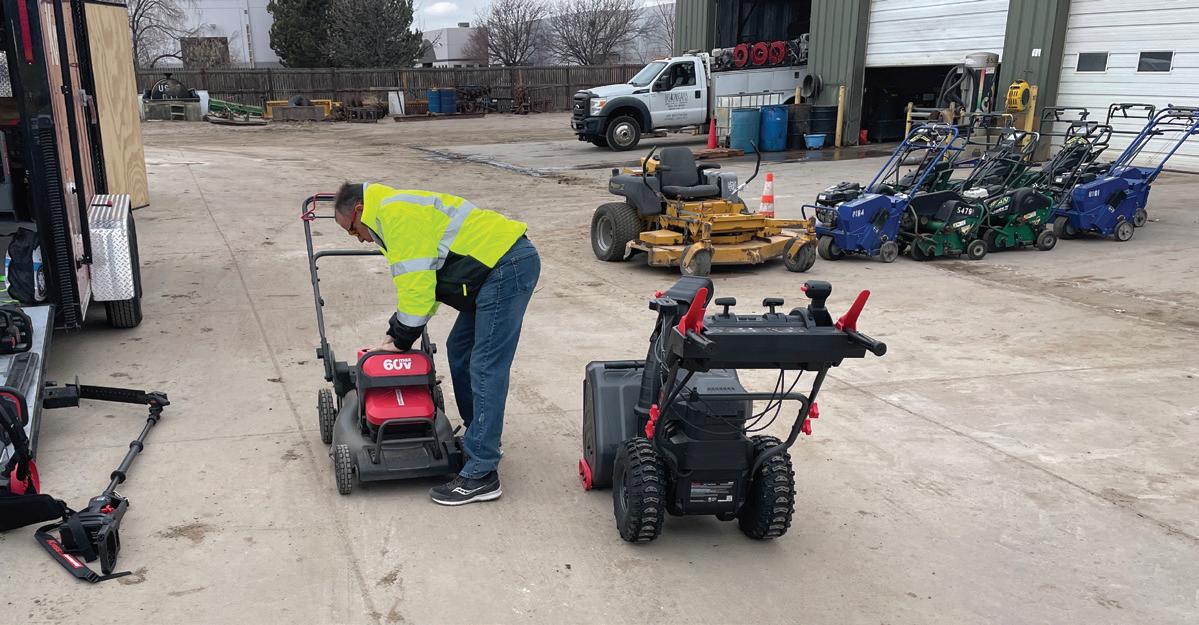
Does your team have the tools or the ability to make minor repairs if needed? If not, how is this accomplished? Is the field staff trained to complete pre-, during and post-event equipment checks? Do you have documentation for these checks, and if so, has that been shared and is it accessible?
Do you have a schedule for regular maintenance? What is the process for breakdowns? Is this process known through the organization, and is it sustainable in long-duration events or crisis management? If not, what is the backup plan?
Ensure all staff understand the basics of the equipment, even if it is not part of their normal role. Train on basic fluids such as oil, DEF and fuel; where and how to check and fill them; as well as basic machine functions. It is critical that, in a pinch, any staff member can assist in these minor tasks.
Do you use snow equipment in other departments in the off-season? If so, do you know how long it takes to change over your fleet?
Performing a dry run on one or several pieces can be extremely beneficial, working out the kinks of the changeover.





Have you done your due diligence to ensure you are prepared? You only get one chance for a first impression.
Are all contracts agreed upon and signed? If not, finalize these before that first event. You do not want to chase signatures prior to an event or perform work without that signature.
Ensure all preseason site checks have been documented and agreed upon with the client.
Confirm that the scope of work is clear with all parties. Does the client understand what work will and will not be performed and when? Is it documented? Have you reviewed major events or crisis management with the client so they know what to expect? Does the team know how to execute so nothing is missed or overserviced due to client direction?
Is the invoicing process clear? Confirm that you have a process to track the work performed, as well as invoicing and payments that are and are not received.
Do you have a process for communication and documentation? Review the method and desired frequency of contact. Who is your organization contacting before, during and after events? Who does the client contact within your organization? Do you have a standard documentation process has that been shared and trained to personnel?
Jenny Girard, ASM, is client success implementation specialist for The Integra Group. Contact her at Jenny.Girard@TheIntegraGroup.com or 518-231-9748.







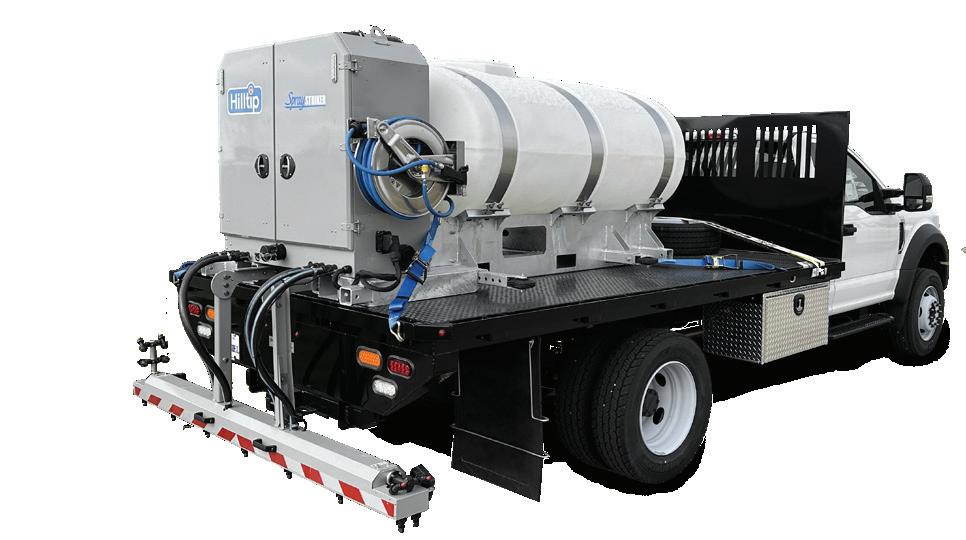



By MICHAEL WAGNER, CSP, ASM
One of the greater challenges to operating a fleet of vehicles and equipment is managing a company-established fuel program. There are many options, opinions and requirements to consider, but ultimately you have to determine what is the most practical, efficient and effective solution for your organization. Here we will cover some of these considerations; the pros and cons to different fuel management options; and ways to deter internal and external theft.
With the equipment being used today, there are many options and alternative fuels that should be considered when developing a solid fuel management program. Equipment and vehicles
commonly operate on diesel and gasoline fuels, and some companies utilize CNG (compressed natural gas), LNG (liquid natural gas), propane and, more recently, hydrogen power. The latter are not common but should be included in your fleet fuel strategy if you use them.
While electric and battery-powered tools, equipment, and vehicles are newer to snow and ice operations, you must also think about electric power supply as a source of fuel. Because this utilizes different resources and strategies, we won’t focus on that here.
Given the many fueling options, begin by analyzing which is best for your operation: on-site or company property fueling systems; off-site fueling stations or public stations; the use of fuel cards, purchase/credit cards; or vendors that can manage your cards, drivers, vehicles, and accounting/ financials. It is important
to compare your options, so you can weigh the pros and cons of each.
On-site fueling allows you to be more efficient in fueling vehicles, equipment, auxiliary tanks, etc. You can monitor and reduce the amount of time drivers stop at gas stations to fuel up, which takes time out of their day and often turns into longer or more frequent breaks that may be avoidable.
Another benefit is managing spending and transactions, reducing theft, and knowing the type, quantity and quality of fuels you are purchasing. Being able to manage these processes and products in-house gives you more control over your vendor selection and fuel consumption.
With the pros come tremendous responsibilities and transparency for the organization that must be followed. Establishing on-site fueling is a massive capital expenditure that can become an

Both card options provide benefits as part of a fuel management strategy, but you must select the option that best fits your organization’s needs:
FUEL CARD
PURCHASE CARD

PURCHASE CARD
Fuel cards limit users to fuel purchases. You can set limits on the types of fuel that can be purchased, designate which stations can be used, how many transactions are allowable, and dollar limits.
Purchase cards allow users to purchase more than fuel, including windshield washer fluid, DEF (diesel exhaust fluid), oils, car washes and more from convenience stores.
extensive and time-consuming process. It will require personnel to manage the software; tank inspections; delivery; regulatory requirements; and local coding and permitting. There are also federal fueling regulations from the IRS, EPA, OSHA, etc. And you must ensure personnel are trained properly to prevent possible injuries, spills or regulatory violations.
The pros: Off-site fueling is fantastic for organizations that don’t have the personnel to manage complex software that focuses on fuel transactions, costing and product tracking.
These programs can include the use of fuel or purchase cards with large fuel retailers or station chains. Another option is to select card providers that administer all functionality. These businesses manage vehicle and driver lists, reporting, budgeting, transactions, and fuel consumption. An
additional benefit is that they track and identify theft quickly, which can help lock down cards and deactivate use. Activity such as card skimming and card theft can be curbed more quickly through built-in features, which takes a lot of manual work if you are doing it through reading reports and transaction lists.
Another benefit is that there is no requirement to inspect fuel tanks or to fund high capital expenditure projects, and they give personnel the flexibility to fuel at different locations and regions so that they can keep moving and working while not having to search for a fueling station. Many purchase cards can be used at thousands of fueling stations around the country, so there is no lack of quick and efficient resources.
The cons: You may lose out on tremendous discounts that will only be offered if you are purchasing and managing your own fuel.
If the credit cards are being used at many different fueling stations, you
1 Use on-site fueling or purchase cards to regulate fuel purchases and consumption limits through assigned transaction limits, daily limits, dollar limits, geographical limits, etc.
are more at risk of card skimming, and theft increases greatly.
Some companies have difficulties with personnel stopping at gas stations frequently for fuel, snacks, restroom breaks, and just breaks in general. Managing personnel time becomes challenging when they can fuel up anywhere in the region and stop further away from office locations where they aren’t visible.
It can be administratively challenging to disburse cards and authorize purchases, and this can quickly become frustrating if you don’t have dedicated office personnel to manage these processes.
As you can see from the brief considerations in this article, there is much to consider when determining how to manage your fueling program.
I recommend contacting vendors of both systems and having in-depth discussions to determine feasibility and benefits, as well as what option fits your organizational needs. There is no one-size-fits-all strategy. You will need to work with others inside the organization to create a strategy, budget, implementation plan, and monitoring plan to create an effective solution.
Michael Wagner, CSP, ASM is Director of Operations at Designscapes Colorado Inc. Contact him at 303328-5554 or mwagner@designscapes.org.
2 Individually assign cards and access to help identify theft points or suspicious activity.
3 Have specific personnel responsible for fueling vehicles and equipment to help manage the accountability and authority for fuel purchasing.
4 Use lockable fuel caps and padlocks with designated access to individuals.

5 Be aware of smart technology and real-time alerts from fueling stations, credit cards and pump devices.
6 Utilize fleet software that connects to fueling software, which can provide deeper analyses on consumption and miles driven or hours operated.


BY MIKE McCARRON
Sidewalk crew management takes a solid action plan and is crucial for maintaining clear and safe walkways during winter months. Proper planning and execution can lead to increased productivity, reduced costs, and higher customer satisfaction. I have put together eight best practices for your company to start working on now. Each one of these concepts has its own set of issues, but they will get you heading in the right direction for this coming season, regardless of the service type. Break out and assign sections to people in your company as this will help build your team going forward.
is worth its weight in gold and can help you plan the most efficient routes, saving time and fuel.
Grouping jobs that are geographically close minimizes travel time between sites, ensuring that crews spend more time shoveling and less time driving. Additionally, being prepared to adjust routes in real-time based on changing conditions, such as unexpected snowfall or traffic delays, is essential for maintaining efficiency.

Equipping your crews with the right tools is crucial for efficient sidewalk clearing. The choice of equipment can significantly impact the speed and quality of the work.
Effective route planning is the cornerstone of efficient dispatching. Utilizing route optimization software can significantly enhance the efficiency of your operations. These tools analyze various factors such as distance, traffic conditions and job priority to create the most efficient routes for your crews. Investing in route optimization software and industry-specific software
Determining the optimal crew size and composition for each job is essential for maximizing efficiency. The size of the crew should be proportional to the size and complexity of the area to be shoveled.
For smaller sidewalks or residential areas, a crew of 2-3 members may be sufficient, allowing for quick and agile operations. For larger commercial properties or extensive sidewalk networks, larger crews may be necessary to ensure that the job is completed quickly and efficiently.
Assigning specific roles within the crew, such as a team leader, equipment operator and shovelers, can improve coordination and efficiency. How many square feet do you need to cover and how soon does the client expect the work to be complete?
Utility task vehicles (UTVs) equipped with plows can cover large areas quickly and are ideal for commercial properties. Push shovels are more efficient than traditional shovels for clearing long stretches of sidewalk.
Stand-on machines are highly maneuverable and can clear snow quickly, making them ideal for both residential and commercial areas. For heavy snowfall, snow blowers can be more effective than shovels, reducing the physical strain on workers and speeding up the process.
There are now machines available that can be used to clear snow while salting at the same time; or you can salt using the same piece of equipment after the snow clearing is done.
The newer machines have come a long way, and you should explore this market if you have properties that can utilize these types of equipment. I saw


several new machines at the 2024 SIMA Symposium in Pittsburgh that were very advanced for sidewalk work and have huge potential, especially with the labor pool shrinking and demand growing.
Proper training is essential for ensuring that your crews are efficient and safe while clearing sidewalks. Ensure that all crew members are trained in the proper use of equipment, including starting, operating and maintaining it.
Training your crews on safety protocols to prevent accidents and injuries is crucial.
This includes proper lifting techniques, the use of personal

Clear and effective communication is vital for coordinating your crews and ensuring that everyone is on the same page. Using mobile apps like Slack, Microsoft Teams or specialized field service management apps can help you keep in touch with your crews, allowing for real-time updates and easy sharing of information. Two-way radios can be a reliable communication tool, especially in areas with poor mobile reception, or when working around high-rise city buildings that can cause cell connectivity issues.
Scheduling regular check-ins throughout the day to monitor progress, address any issues, and adjust as needed is also important for maintaining efficiency for the production manager trying to keep properties on time for your clients.
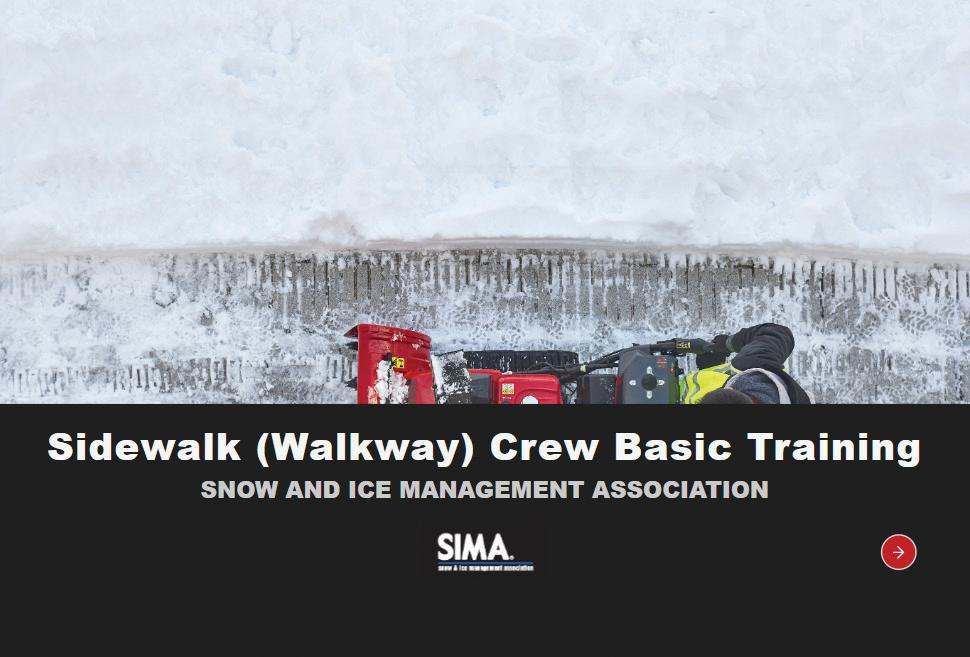
NEW TRAINING: SIMA has developed a 5-module sidewalk safety training course in English and Spanish. Learn more at sima.org/safety
protective equipment (PPE), and awareness of potential hazards. Conduct a full review of the site maps and scope of work for each location so everyone understands the client expectations. Additionally, training your crews on how to interact with customers professionally and courteously can lead to positive customer interactions, repeat business and referrals.

Keeping an eye on the weather forecast is crucial for planning your dispatches effectively. Being proactive can help you stay ahead of heavy snowfall and ensure that your crews are ready to respond.
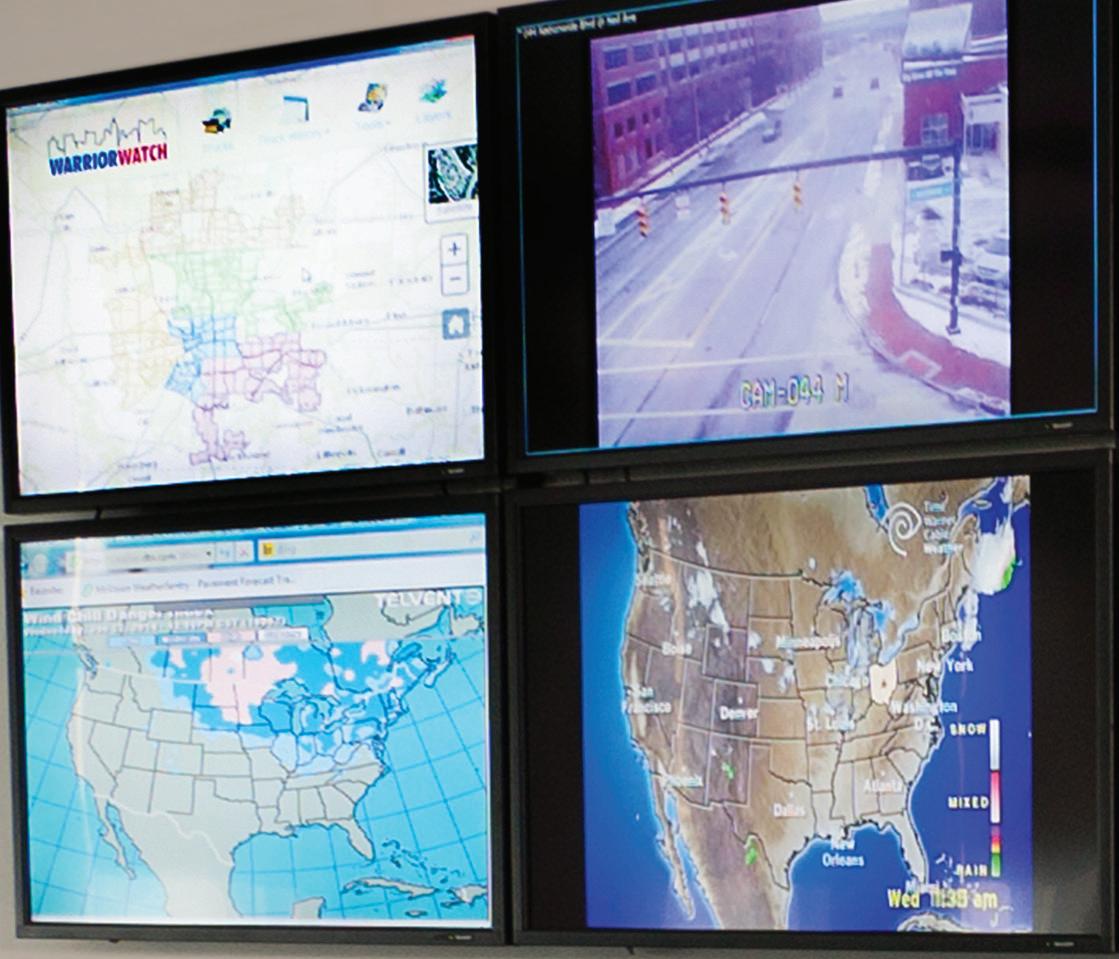
Using weather apps or onsite cameras and mini-weather stations to monitor forecasts and receive real-time updates is essential. Setting up alerts and notifications for severe weather conditions allows you to mobilize your crews quickly in response to changing weather. With enough accurate notice, pre-treating sidewalks with salt or other deicing agents before a storm can make the sidewalk clearing process easier and more efficient.
Leveraging technology can significantly enhance the efficiency and effectiveness of your dispatch operations.
Implementing GPS tracking for your vehicles and equipment allows you to monitor the location and status of your crews in real-time, ensuring they are on track and identifying any potential delays.
Using field service management software can streamline scheduling, dispatching, and invoicing, helping you manage your operations more efficiently and provide better service to your customers.
Setting up automated notifications to keep customers informed about the status of their service, including estimated arrival times, completion notifications, and any delays due to weather or other factors, can improve customer satisfaction.
You should also keep photos of all jobs showing before, during and after each service visit for future training and liability issues with your insurance company.

veys to gather feedback on the quality of service, timeliness and professionalism of your crews can be useful. Tools like SurveyMonkey or Google Forms can help with this process.
Having your account managers and/or your sales team place follow-up calls to key clients to discuss their experience and address any concerns adds a personal touch and strengthens customer relationships. Encouraging satisfied customers to leave positive reviews on platforms like Google, Yelp or your company’s website can enhance your reputation and attract new clients, especially if you are heavy in residential work.
Customer feedback is invaluable for improving your sidewalk services. By actively seeking and responding to feedback, you can identify areas for improvement and ensure customer satisfaction. After completing a job, sending sur-

Efficiently dispatching crews for sidewalk clearing involves careful planning, the right tools, effective communication, and ongoing training. By implementing these best practices, you can improve the efficiency and effectiveness of your operations, ensuring clear and safe sidewalks for your customers. Incorporating customer feedback and leveraging technology will further enhance your ability to provide high-quality service and maintain customer satisfaction.
By following these guidelines, you can create a streamlined and effective dispatch process that maximizes productivity and minimizes costs. Whether you are managing a small team or a large fleet, these strategies will help you achieve your goals and keep sidewalks clear and safe throughout the winter season. Get started now and each season forward will be more successful.
Mike McCarron is president and founder of ImageWorks Landscape Management, a commercial landscape maintenance and snow removal firm in the Northern Virginia market. He has 20+ years of industry experience. Email him at mike@imageworkslandscaping.com.


NOVEMBER 3-6, 2024
CHARLOTTE CONVENTION CENTER
CHARLOTTE, NC



• Gain practical knowledge to address your specific management challenges.
• Build valuable relationships with industry leaders and peers to boost your business.
• Discover cutting-edge solutions to drive your company forward.
• Enjoy exciting interactive experiences, learn the history of NASCAR and more at the ELEVATE Bash in the NASCAR Hall of Fame.
• Experience southern hospitality with receptions, meals and refreshments included daily. The ELEVATE Advantage: Powered by



The NALP Women’s Forum Sunday, November 3, 10:30 a.m. – 4:30 p.m.
Bring Your Team! Register 10 or more team members and receive a discount of 10% o our lowest price!



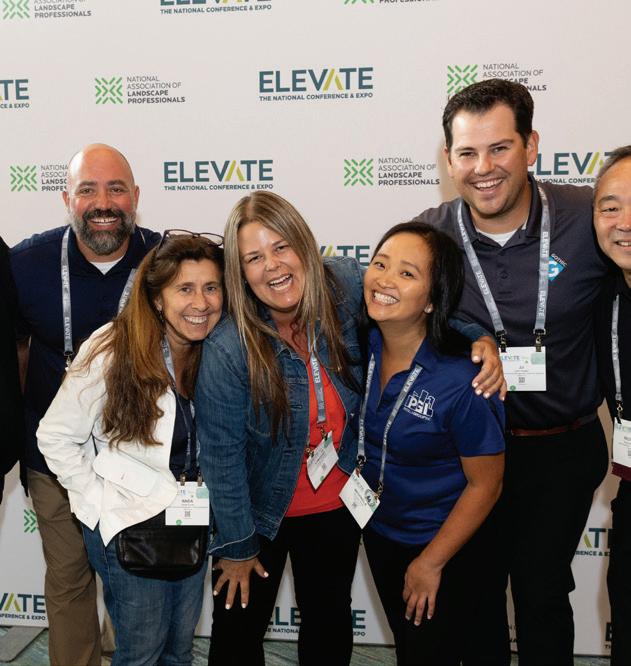
Join us for a daylong pre-ELEVATE event for women in the green industry, presented by NALP. Be inspired by our influential speaker, Sherhara Downing, Co-Founder & Chief Visionary O cer, SpeakHaus, and connect during roundtable discussions and an o site networking activity. Seize the chance to grow your network and advance your career in a supportive and inclusive environment. Separate fee applies, ELEVATE registration is required. People of all genders are welcome to join!







As winter approaches, snow and ice contractors face crucial decisions: Should you scale back operations or invest more? How many workers will you need? When it comes to material management, you don’t have to rely on educated guesses. There are steps you can take to keep the odds in your favor, making your operations more efficient and cost-effective.
One of the biggest challenges in snow and ice management is material management. Using too much material— whether salt, sand or a mix—can harm the environment and your budget. Excessive use adds up over time, draining resources and increasing costs. Conversely, using too little material can lead to repeat visits and frustrated clients.
Efficient material management is crucial. Without a clear understanding of the material needed for each job, you risk wasting time and resources. Over an entire winter season, these inefficiencies can significantly impact your profitability and even threaten your business.
The VBX+ from BOSS offers a smart solution to these challenges. This advanced spreader technology puts you in control with precision and efficiency.
The VBX+ features an advanced controller that allows for precise management of material distribution. With standard rate control, you can set the exact amount of material to be spread. The optimized spread width and flow rate mean you can cover more ground efficiently, reducing the
time spent on each job. Additionally, the material tracking feature provides detailed information on the controller. The controller totalizes material spread on the job site, helping you to estimate, plan and budget more effectively. By using just the right amount of salt or sand, you can maintain effective ice control while minimizing waste and environmental impact.
Calibration of the VBX+ ensures the spreader is optimized to the preferred spreading material. This process helps to ensure accuracy of material reporting.
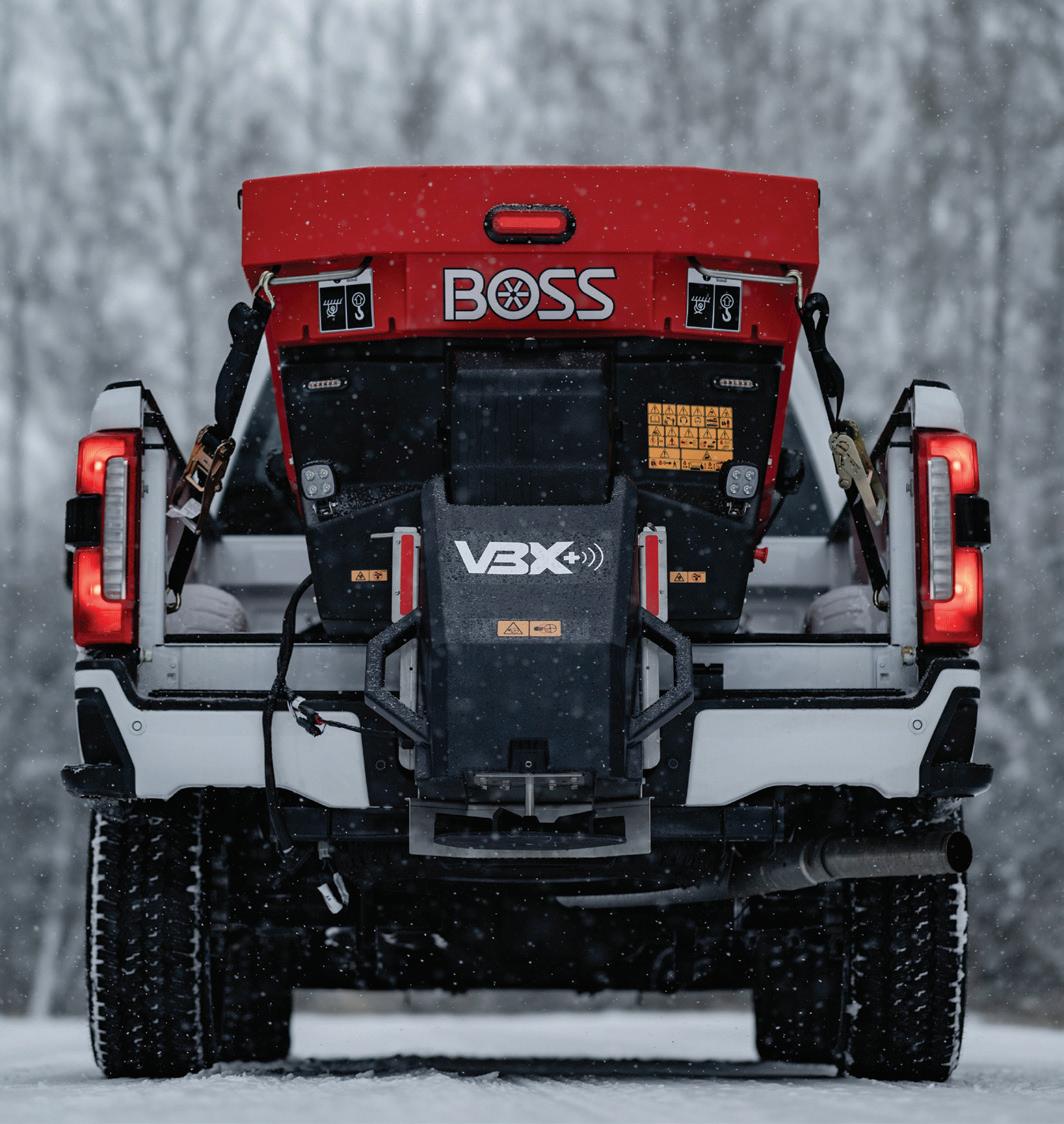

The VBX+ boasts significant improvements in motor performance, with 50% more power on the feeder system and 80% more power on the spinner compared to the previous VBX model. This increased power ensures that materials are distributed evenly and effectively, even in the harshest winter conditions.
Visibility is crucial when working in winter conditions, and the VBX+ addresses this with upgraded LED CHMSL worklights and strobe lights. These lights provide excellent illumination, allowing you to work safely and effectively at any time of day or night. The selectable patterns for the strobe lights also enhance safety by making your equipment more visible to others.
The VBX+ is not just a powerful tool for today; it’s also designed with the future in mind. As a smart-compatible product, it is ready to integrate with the next generation of connected technology from BOSS. This future-proof design ensures that your investment will continue to pay off as new advancements in material management technology become available.
The VBX+ is a game-changer in power, technology and user experience. It’s also future-ready, designed to be a smart-connected spreader for the next phase of technology from BOSS.
In a world of unpredictable and extreme weather, there’s no room for error or inefficiency. Stop playing guessing games with your material management. Choose the smart option with the VBX+ and remove the guesswork from your operations.
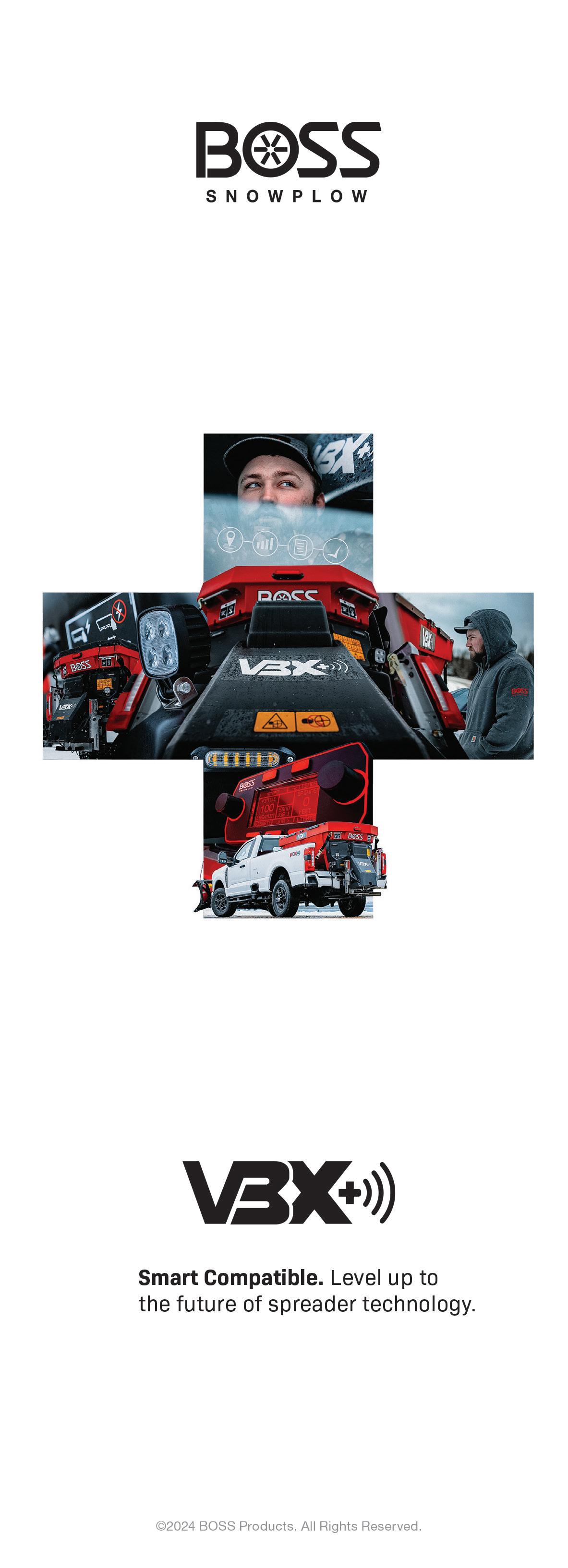

The WESTERN Heavy-Duty IMPACT professionalgrade V-plow is exclusively designed and built to turn your heavy-duty UTV or subcompact tractor into a winter workhorse. The tough, 6-foot-wide V-plow can easily adapt to handle 5-foot sidewalks and gates whether in angle, scoop, or V mode. It also provides trip-edge protection and features Scrape Lock for clean scraping and back dragging. www.westernplows.com
Toro Company
At 12 inches wide, the Toro Power Shovel cuts through snow up to 6 inches deep and throws it up to 25 feet. Easily clear decks, walkways and a 4-stall driveway on one charge. The removable battery has a run time up to 45 minutes and recharges in 60 minutes. www.toro.com


The high-performance Meyer Turbo Broom features a high-speed rotary brush that removes snow and ice from walkways and other paved and textured surfaces. It features durable poly bristles that penetrate nooks and cracks that snowblowers and shovels can’t reach. Plus, increase the return on your investment using Turbo Broom year-round for sweeping dirt, grass and other debris. www.meyerproducts.com


The Ariens MAMMOTH is a go-anywhere stand-on behemoth that clears any snow- or ice-covered path. With a best-in-class Kawasaki engine, four-wheel-driven tires, plus any one of seven easily interchangeable attachments like a power brush, snow thrower, V-plow and more, MAMMOTH blasts through any property in the harshest climates. www.ariens.com

The TRAILCOMMANDER 250 and TRAILCOMMANDER 600 provide up to 36 inches of spread width in a drop pattern, so the salt stays precisely where your vehicle drives, protecting turf and sensitive surfaces. With three standard mounting systems, these units can fit on most UTVs, compact tractors, or wheel loaders to make quick work of sidewalks, walking paths, and other paved surfaces. www.fisherplows.com





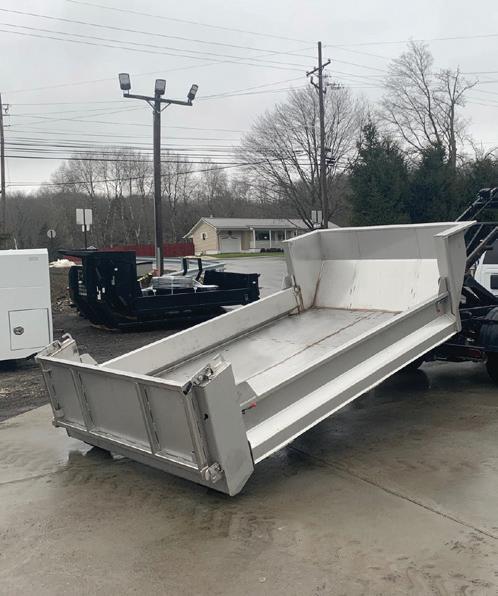
With its sleek design and compact 34” width, the BOSS SR Scout effortlessly navigates through narrow pathways and intricate entryways, clearing snow with unparalleled precision. Powered by a robust 429cc Kohler engine and equipped with a 4’ fully hydraulic straight blade featuring float and D-force technology, the SR Scout maximizes lift height, effortlessly clearing obstacles and stacking snow with ease.

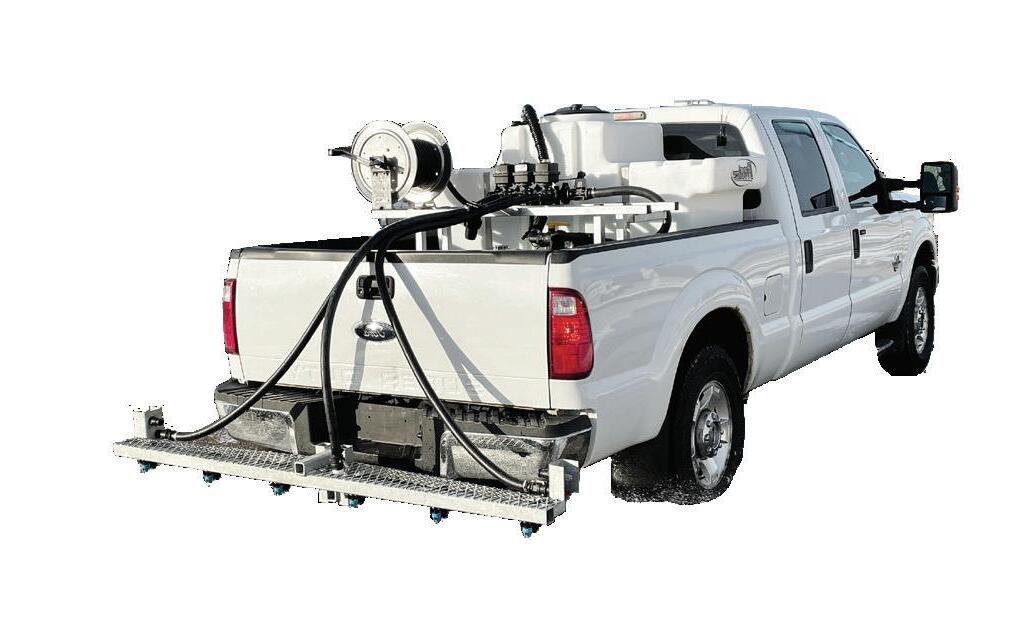






The SnowFire Xtreme is a 2-in-1 trip edge snow blade and box plow with floating skids and a contouring sectional cutting edge. Angle plow and back drag with the blade and then hook onto the box for pushing—all while getting the best scrape and even wear. www.kageinnovation.com


Toro and BOSS have teamed up to create snowplow blade attachments for the Dingo. The 5-foot attachment is perfect for clearing walkways and sidewalks and is designed to minimize the impact of hitting obstacles. It is fully hydraulic to deliver maximum efficiency and is compatible with multiple Dingo models. www.toro.com

The Virnig V20 Mini Skid Steer Angle Broom features a direct drive Eaton motor and a self-centering swing linkage system for optimal sweeping. Available in 48- and 60-inch widths, it includes a recessed motor, HD 1.25” greaseable bearing, easy-to-replace wafers, and protective stands for bristles during storage.
www.virnigmfg.com

SnowWolf
The SnowWolf WolfPaw kits for Bobcat Toolcat machines are designed to increase the machine’s traction on snow and ice, giving your operator optimal control and maximizing the performance of the Toolcat, a popular solution for trail and sidewalk clearing. www.snowwolfplows.com
Discount Snow Stakes
Polar Bear Arctic Gloves are cut- and impactresistant gloves featuring an inner liner with a 13-gauge high-visibility orange water-repellent seamless Tuffalene UHMWPE shell. The inner liner is a 10-gauge brushed acrylic terry cloth. Black foam rubber coats the palm and provides grip, while the TPU impact protection cushions the knuckles and metacarpal bones. The knit wrist cuff provides a secure fit. https://discountsnowstakes.com


Blizzard Dynamics
Patented Blizzard Dynamics Markers are reducing accidents according to DOT data nationwide. Blade identification through this technology has been proven over the last 6 years through insurance results from districts. Our patented LED and stainless fastening system outperforms all competitors. www.blizzarddynamics.com
JANUARY 21–23, 2025 Saint Paul RiverCentre
TUE., JAN. 21: A full day of education for these Villages: Landscape/ Hardscape Contractor, Landscape Design/Landscape Architecture, Golf, and Water/Irrigation, as well as business sessions in the Management Path.






THU., JAN. 23: A full day of education for these Villages, plus the trade show will be open in the morning! From trends to business strategies, find everything you need to thrive!







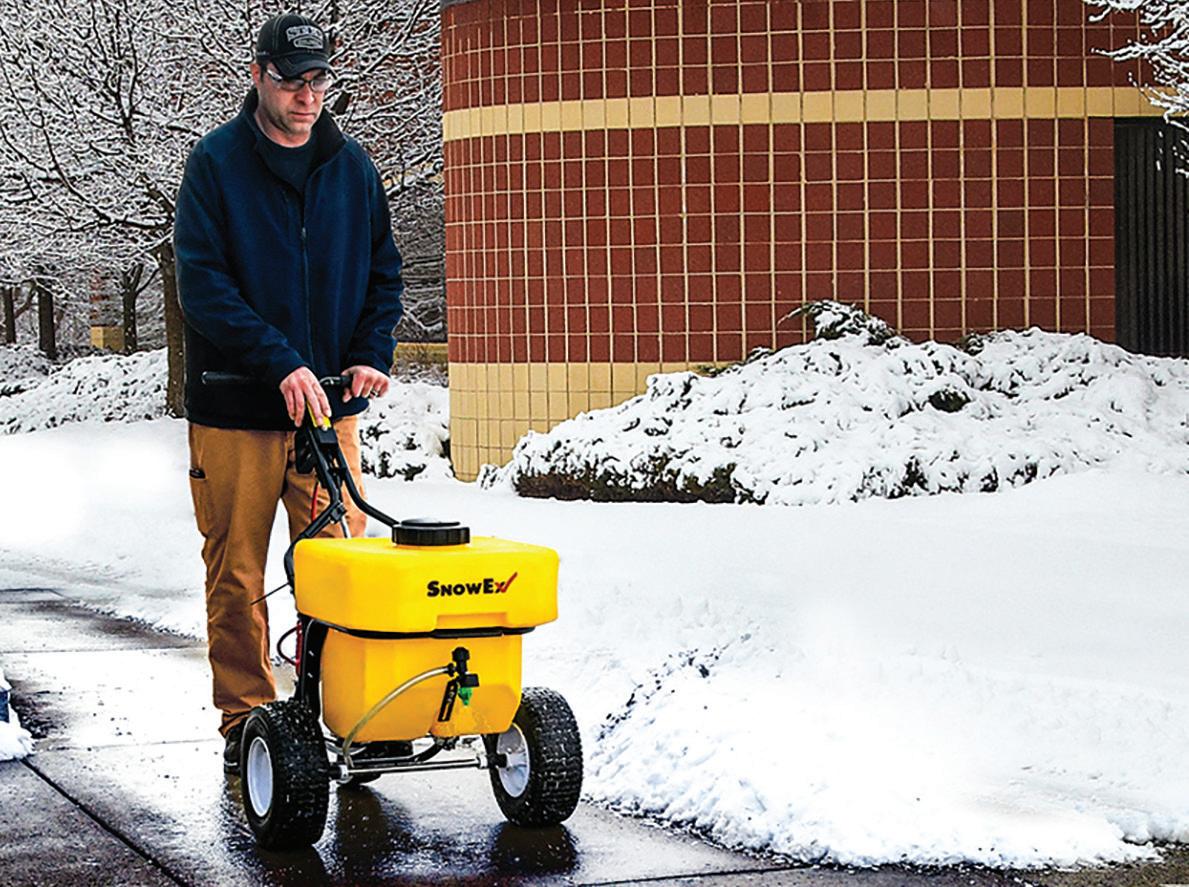
SnowEx walk-behind liquid sprayers are electric-powered and can spray brine up to 48 inches wide through the front boomless nozzle or spot spraying wand, making short work of some of the toughest applications, like stairs and sidewalks. The rechargeable battery powers up to 10 full tanks on a single charge, and an extra-wide opening makes filling easy. Large, pneumatic tires help maneuver over ice and snow. www.snowexproducts.com
The SaltDogg Snow Pusher Shovel provides effortless snow removal without lifting. The ergonomic D-handle is designed for comfort and control, while the heavy-duty fiberglass shaft and UHMWPE blade provide unmatched durability. Available in many sizes (24”, 30”, 36” or 48”), sold individually or in 6-packs. www.buyersproducts.com

Hilltip IceStriker DSB are 8- to 18-cu-ft self-loading, drop spreader buckets designed for compact tractors and loaders. These hydraulic or 12V electric spreaders can be mounted on the front or back of vehicles and are perfect for parking lots, courtyards, walkways and pedestrian paths. www.hilltipna.com

US POSTAL SERVICE STATEMENT OF OWNERSHIP MANAGEMENT AND CIRCULATION
TITLE: Snow Business PUBLICATION: #2155-2576
FREQUENCY OF ISSUE: Bi-Monthly except Sept & Oct
NO. OF ISSUES PUBLISHED ANNUALLY: 7
MAILING ADDRESS: Snow & Ice Management Association, 10140 N. Port Washington Rd., Mequon, WI 53092
PUBLISHER/Finance & HR Director: KC Hallgren, 10140 N. Port Washington Rd., Mequon, WI 53092
EDITOR: Cheryl Higley, 10140 N. Port Washington Rd., Mequon, WI 53092
OWNERS: Snow & Ice Management Association, 10140 N. Port Washington Rd., Mequon, WI 53092
Known bondholders, mortgages or other security holders
EXTENT AND NATURE
OF CIRCULATION

Kahtoola EXOspikes footwear traction delivers dependable grip for snow and ice management, featuring 12 tungsten carbide spikes per foot for secure footing on icy surfaces. Lightweight and versatile, they ensure stability in varying winter conditions, making them essential for professionals maintaining safety on sidewalks, roads and other slippery environments. www.kahtoola.com
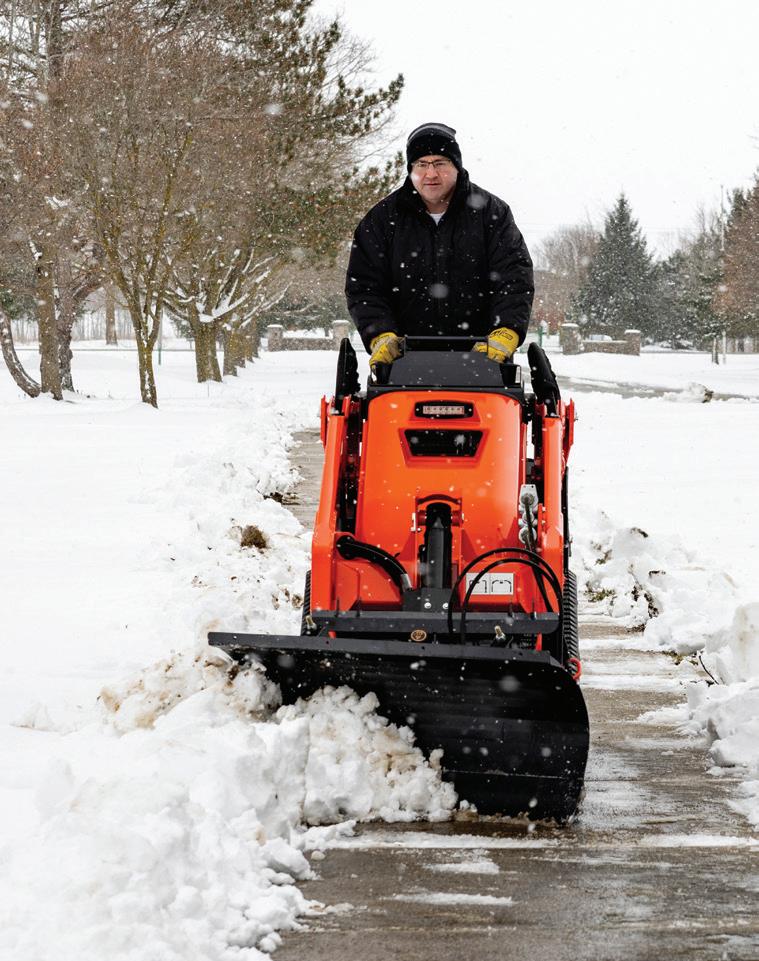
The HLA Snow 1000 Series Angle Blade is designed for compact tractors and skid steers with an operating weight of up to 3,000 lbs. With options for manual or hydraulic angling, this blade is perfect for clearing walkways and tight spaces where larger equipment and blades can’t reach. www.hlasnow.com

The new Ventrac SB350 Brine System is a rear-mounted, 35-gallon-capacity pre-treatment addition to the Ventrac winter fleet. The adjustable spray width of 48-84” is perfect for tight sidewalks or larger transitional areas. The SB350 comes standard with a spray wand, reaching up to 60” for treating entryways or hard-to-access areas. www.ventrac.com
Special
Mention of products and their attributes
its agents or staff. Snow Business
in this magazine.
Visit the Snow Business Tools Online page at sima.org/tools or scan the QR code for more in-depth product information, including the videos of the latest products and services.
COMING IN DECEMBER: Software & Weather Tools








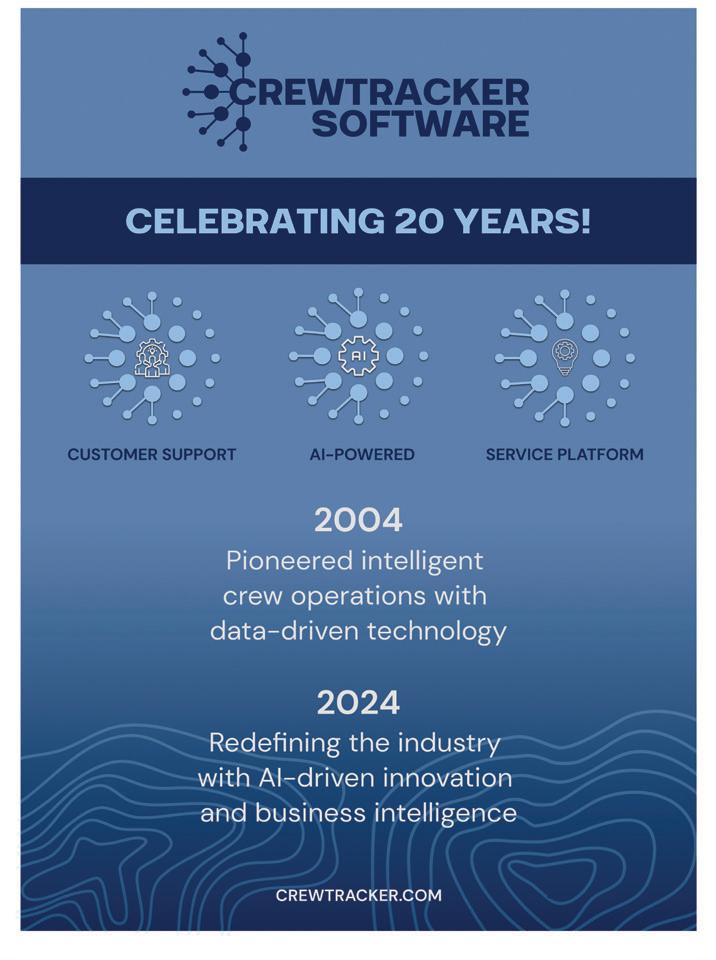
When people are given the incentives and structure they need to create connections, understand others, and communicate with those outside of their team, silos are far less likely to crop up.
So, what’s a communication silo? In the simplest terms, it’s when people in an organization don’t share information. Often, it’s about teams and departments only talking among themselves and not with others.
Silos can develop for any number of reasons, but some common ones include: Team concerns: People in one team feel that sharing information will cause a roadblock in their plan of execution.
Conflict: Ongoing or historical conflict between teams prevents people from communicating with one another in a reasonable manner.
Separation: Natural separation caused by physical distance or disconnected workflows. When silos form, everything from culture to performance metrics are affected.
Silos break down cultures of trust and collaboration. Without trust, people do not feel psychologically safe. At best, communication outside of one’s silo becomes an inconvenience. At worst, it becomes a fire starter.
A weak organizational culture with poor standards for communication will cause problems for people and teams at all levels. Some examples include increased stress and burnout rates, reduced morale, lower employee retention, and lower levels of employee engagement.

When silos form, people don’t share information and opinions important to other teams and departments. They don’t seek information that might help their own team. In one way or another, a reluctance to communicate will induce consequences for everyone in an organization. This can take shape in many different forms, such as: Increased risk of errors and misunderstandings. A lack of communication can turn what might have been an easy-to-fix misunderstanding into a grave mistake that’s only noticed when it’s too late. Without trying to remove communication roadblocks, there can only be confusion and ignorance. In this environment, errors are not only more likely
to occur, but also to be more costly when they do.
Decreased efficiency. Teams and departments working together fluidly can create efficiencies just by understanding one another. For example, a production team might be able to make a small process change that creates a massive timesaver for a quality control team, let’s say by a factor of 50%. The quality control makes this known to production, which makes the change, increasing the volume of quality control’s outputs by 50%. With siloed communication, opportunities like this often go unseen. This results in lower overall productivity, suboptimal processes, stifled innovation and, ultimately, weaker bottom-line performance.
As a leader, there’s quite a lot that you can do to make a difference. I see it all the time with our clients. I’ve worked with plenty of leaders who have gone out of their way to build and maintain relationships with other teams and departments. I’ve seen these leaders take already high-performing teams and almost double their output.
By taking the initiative like this, they are paving the way for better performance for their team, the teams they work with, and the organization as a whole. The likelihood that there is at least one impactful thing that other teams can do for you, and vice versa, is very high. Seeking out and maintaining those connections allows a leader to get ahead of the game and prevent silos.
For a comprehensive, organization-wide solution to breaking down communication silos, you need to provide people with the platform and structure necessary to connect with one another. Although core values and social events and happy hours will help, it’s often simply not enough to have the lasting effect that you are looking for. You need a structured, organized system built around encouraging and enabling people to connect with one another. When people are given the incentives and structure they need to create connections, understand others, and communicate with those outside of their team, silos are far less likely to crop up.







